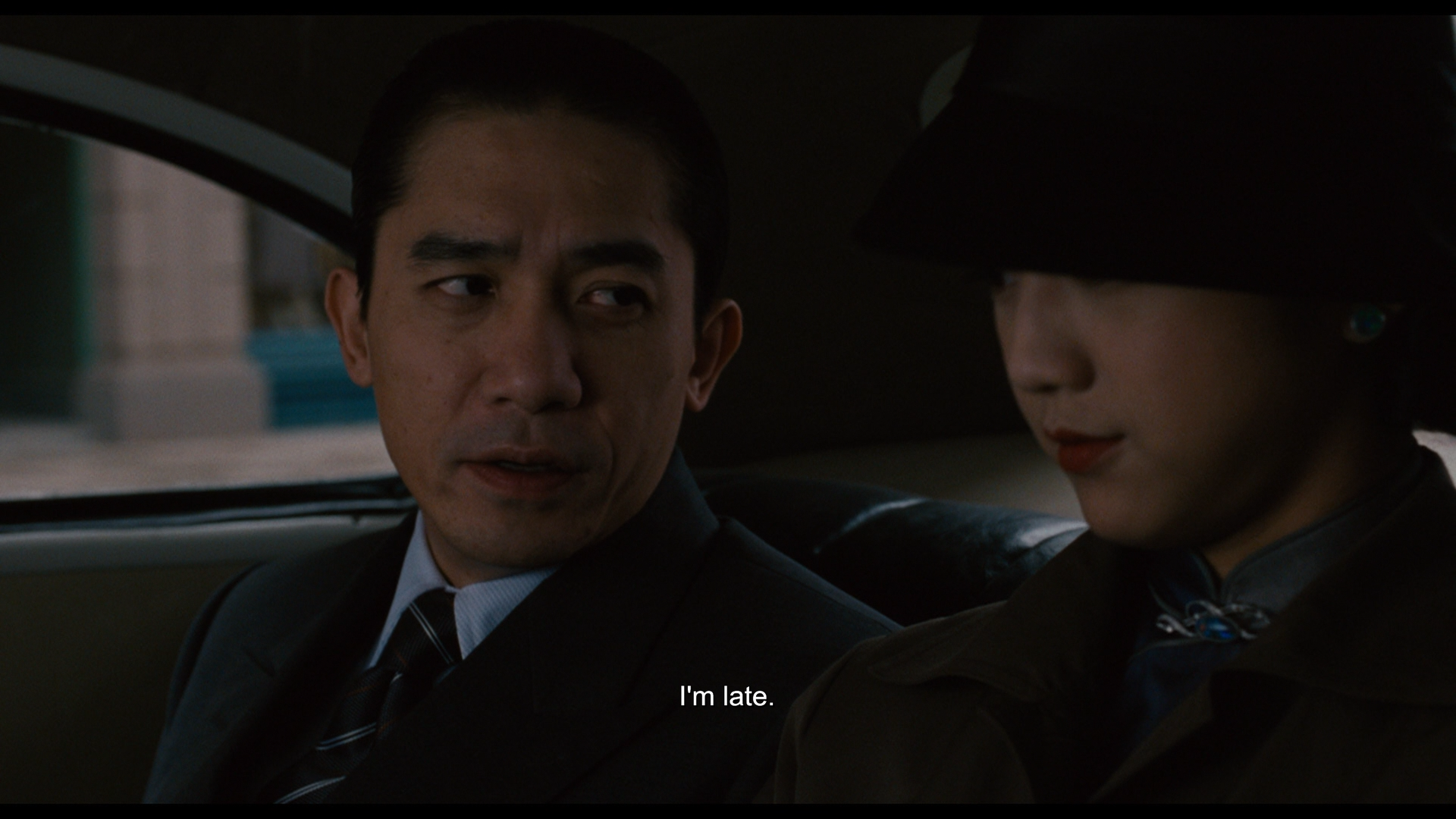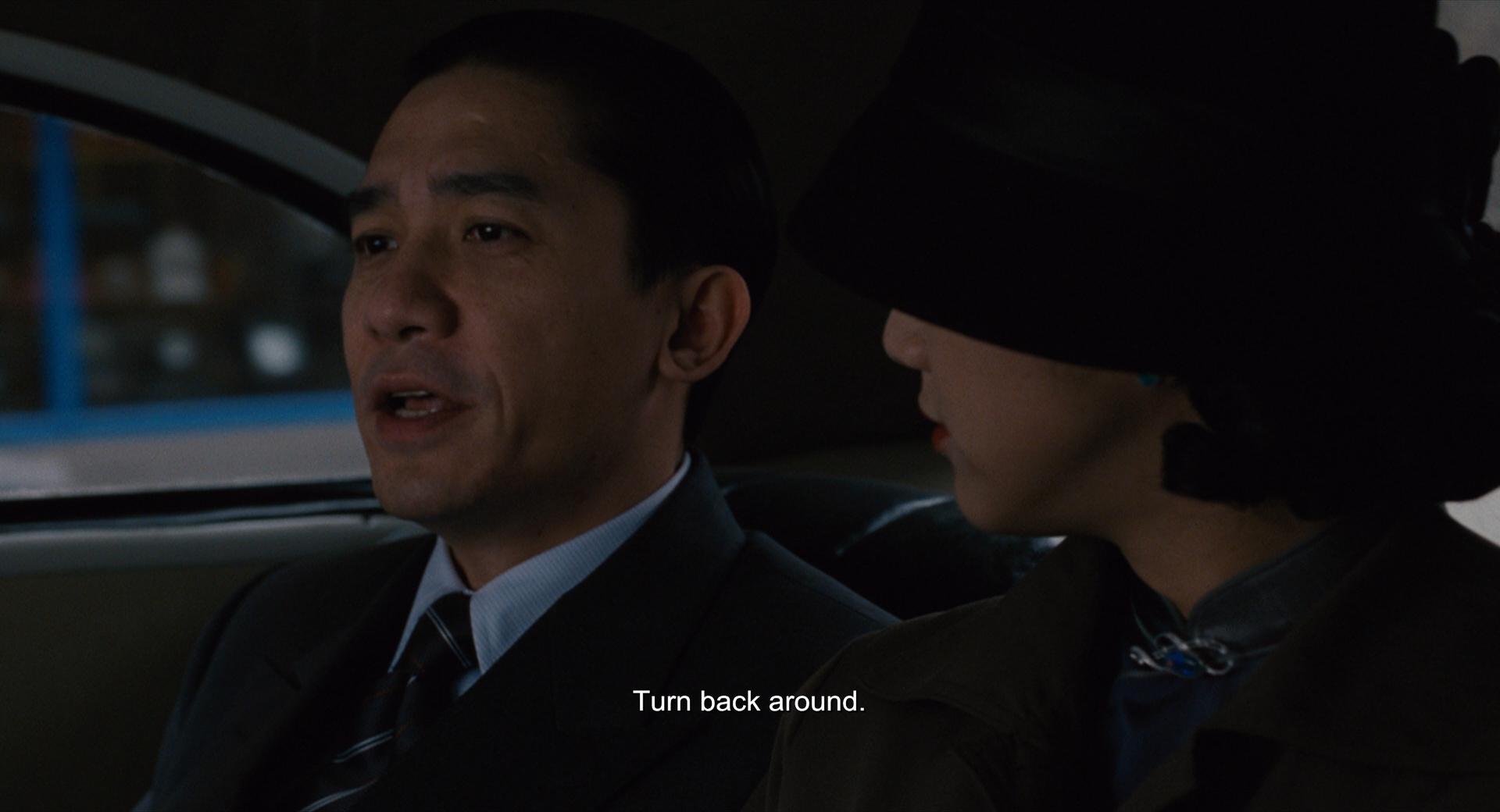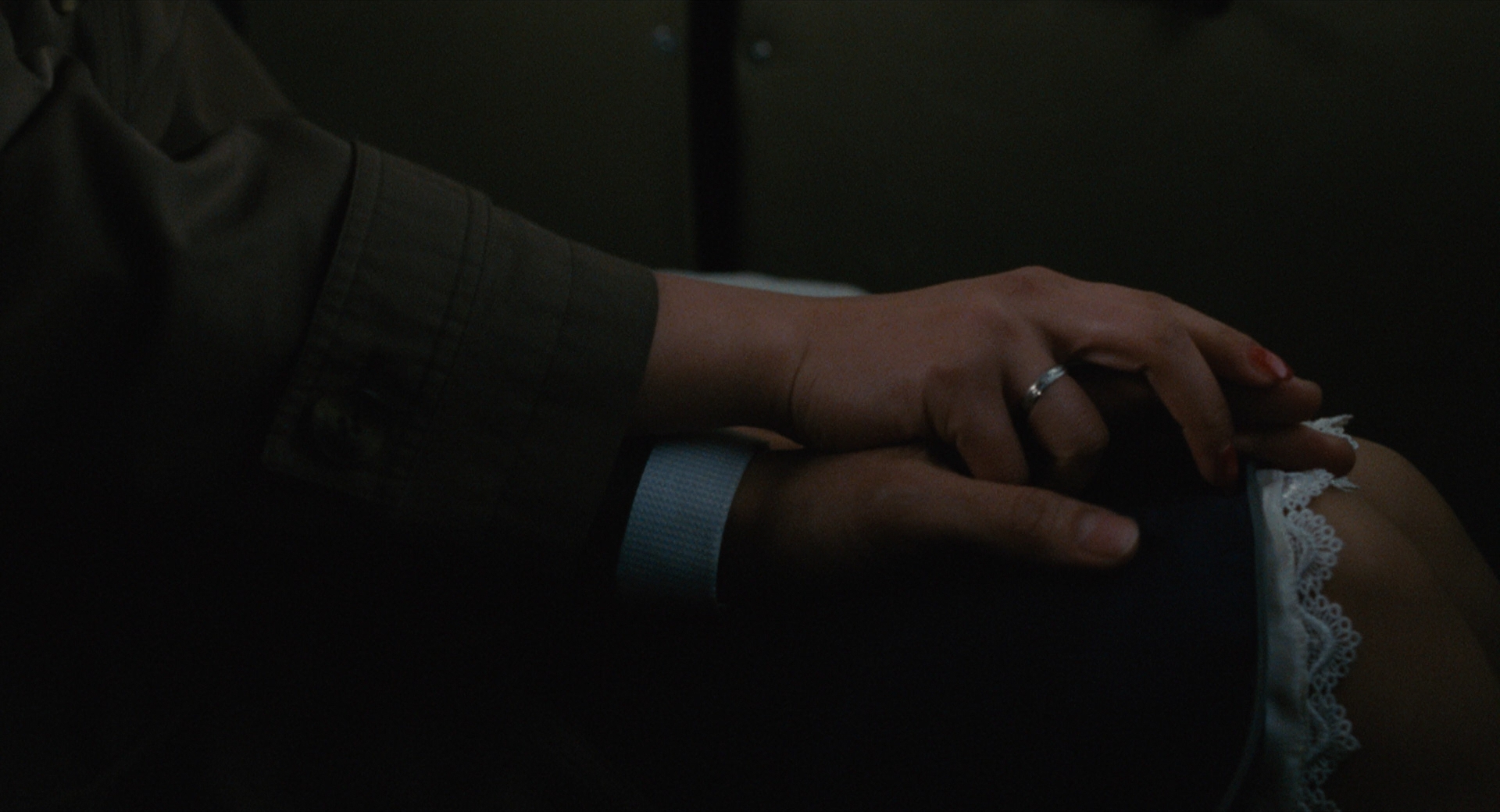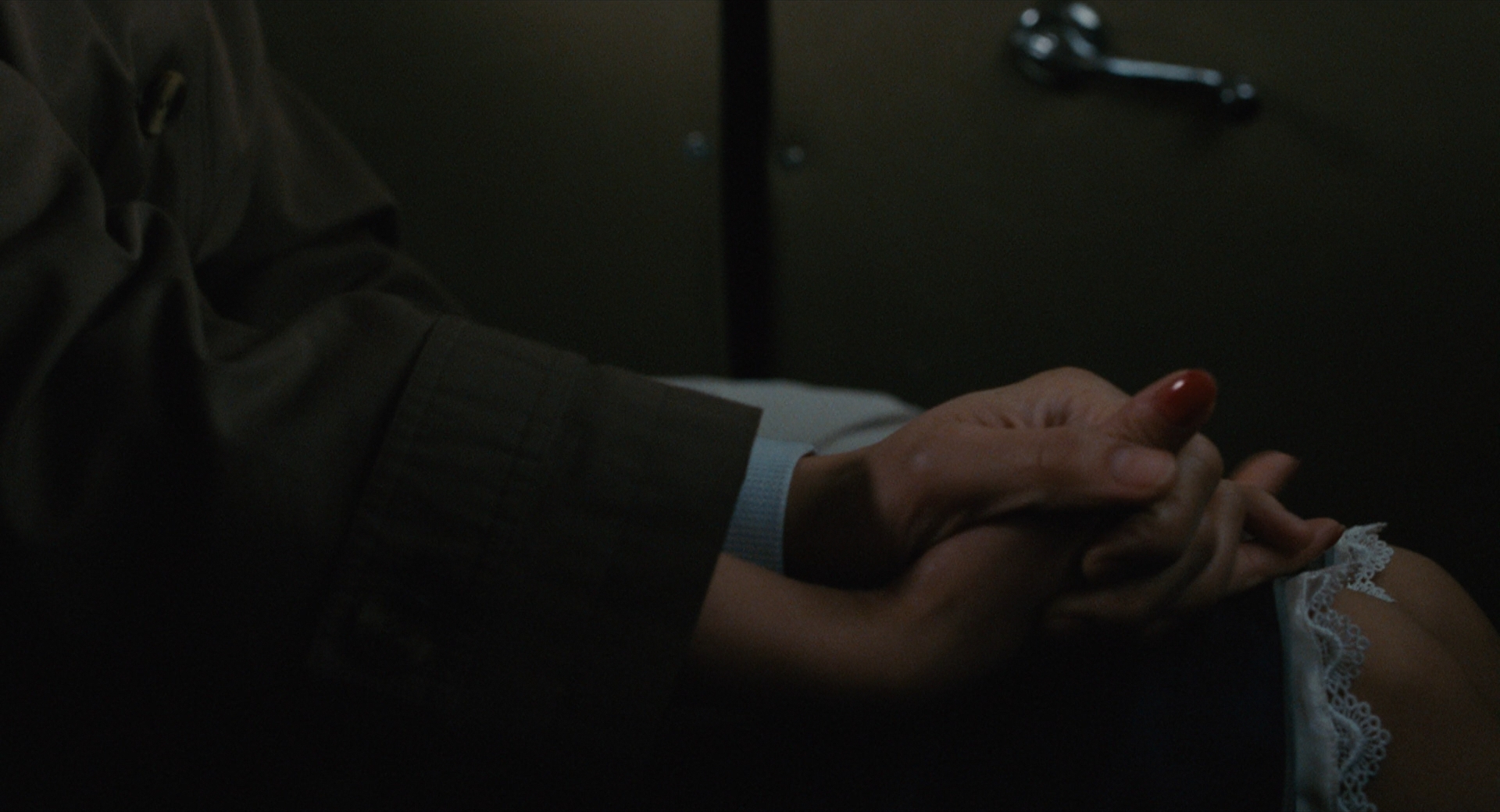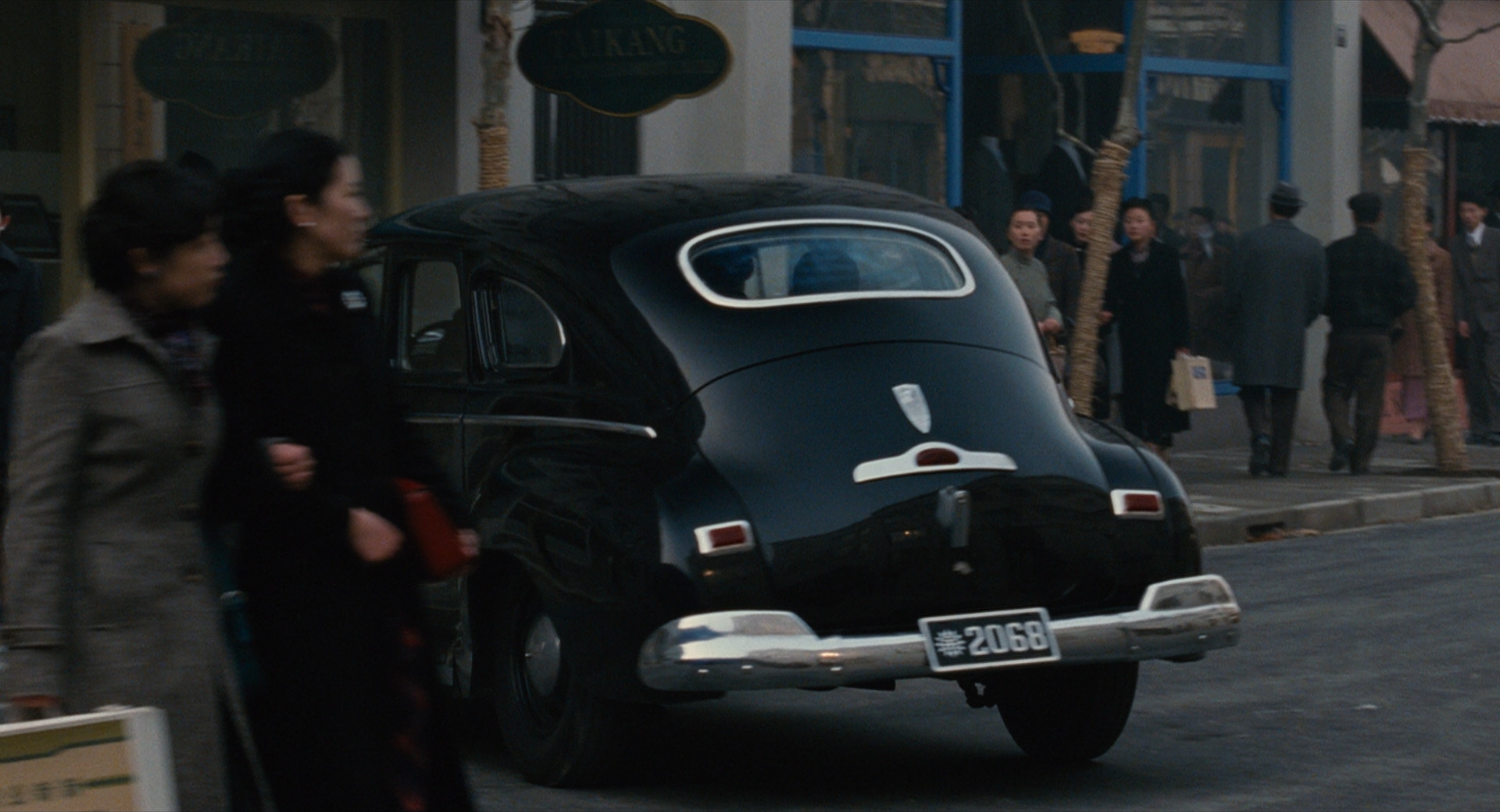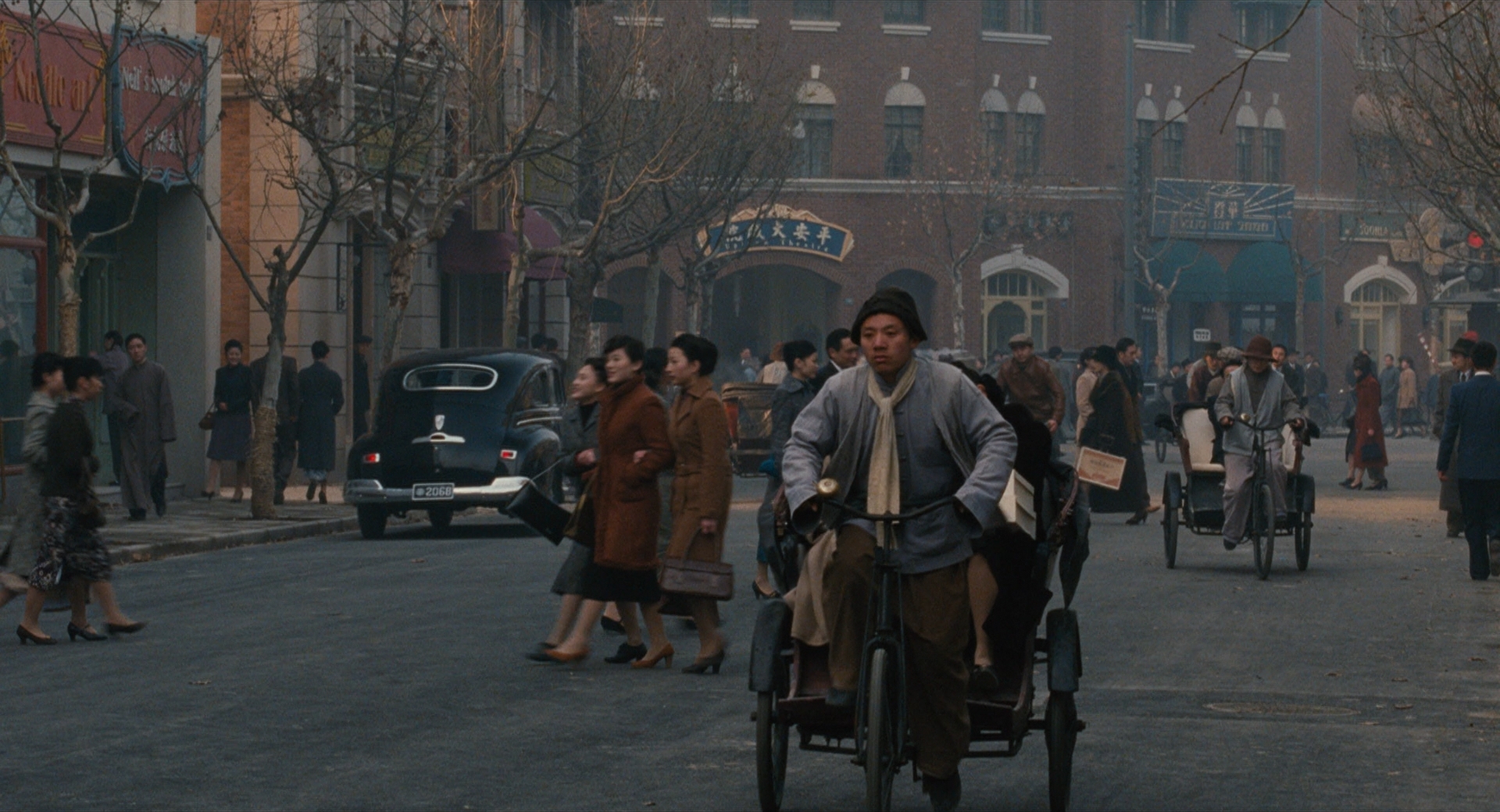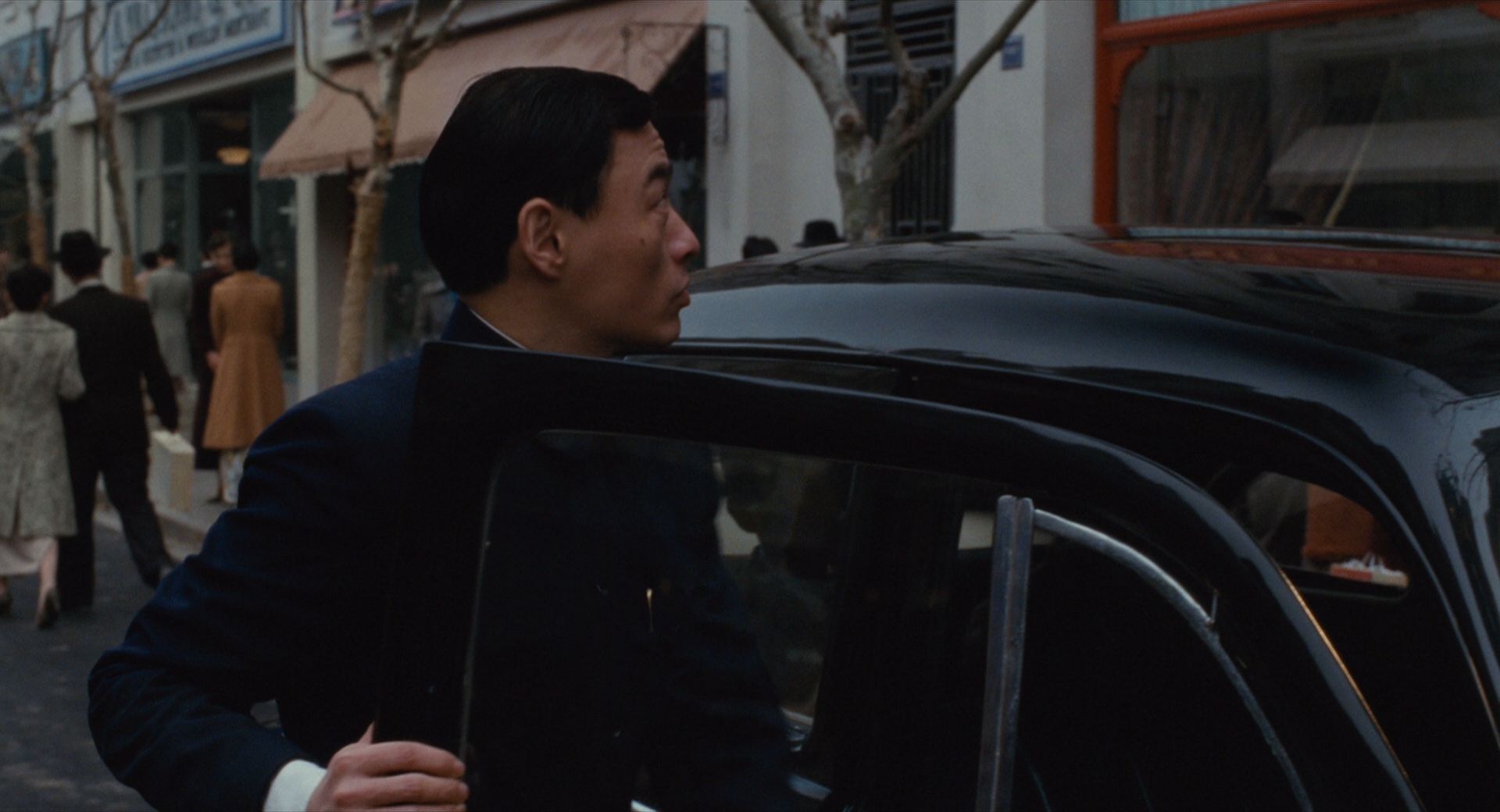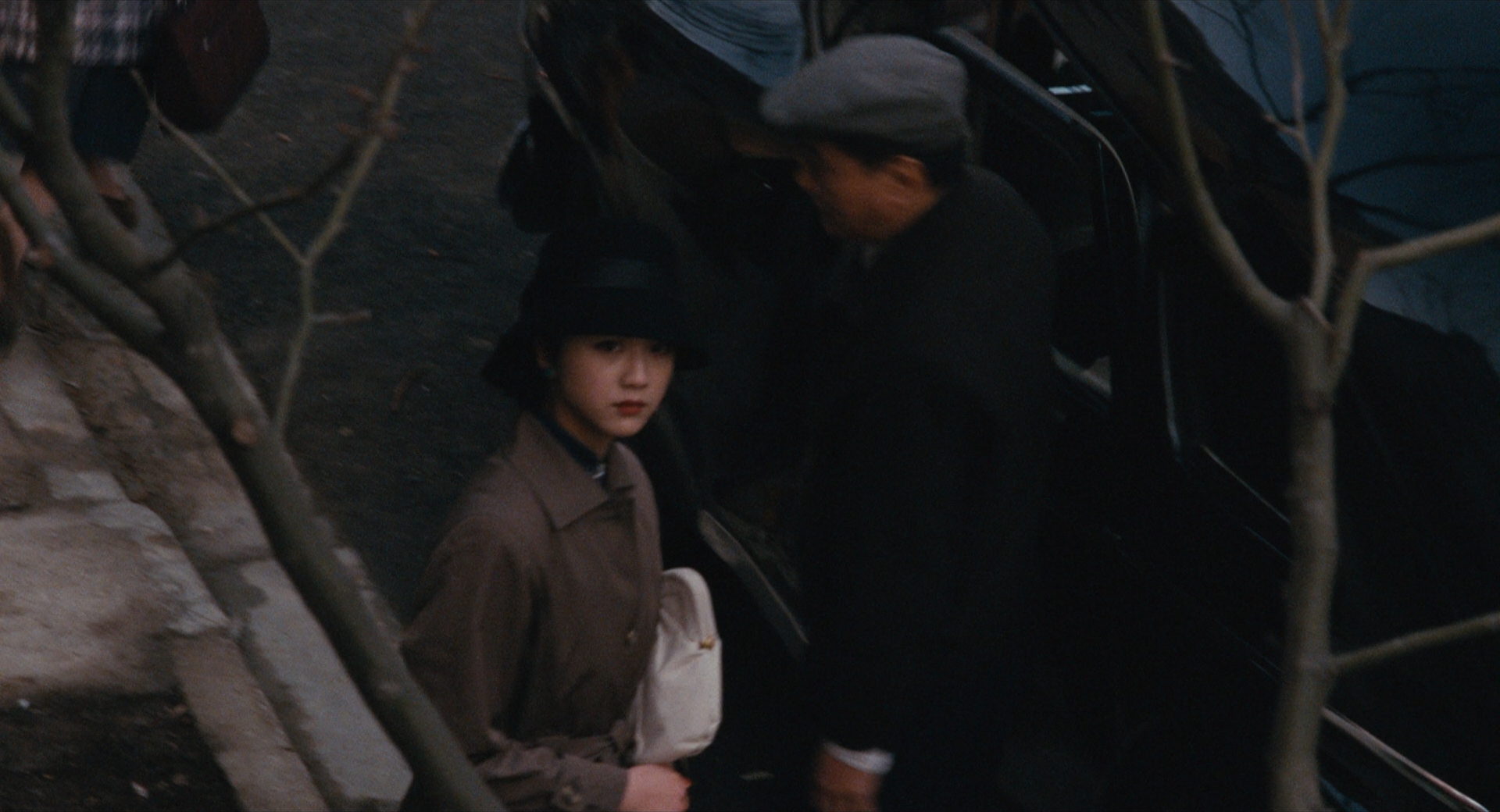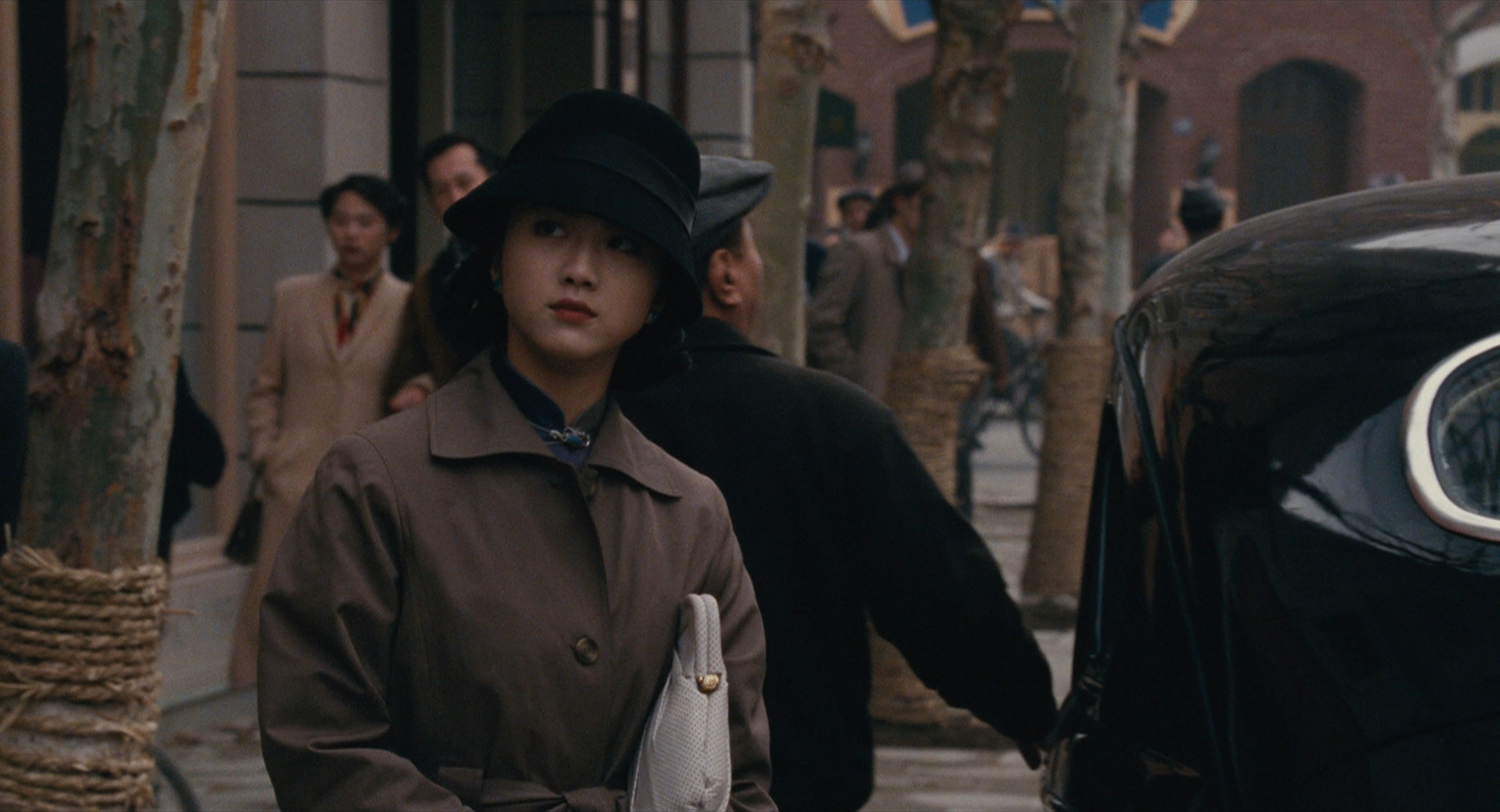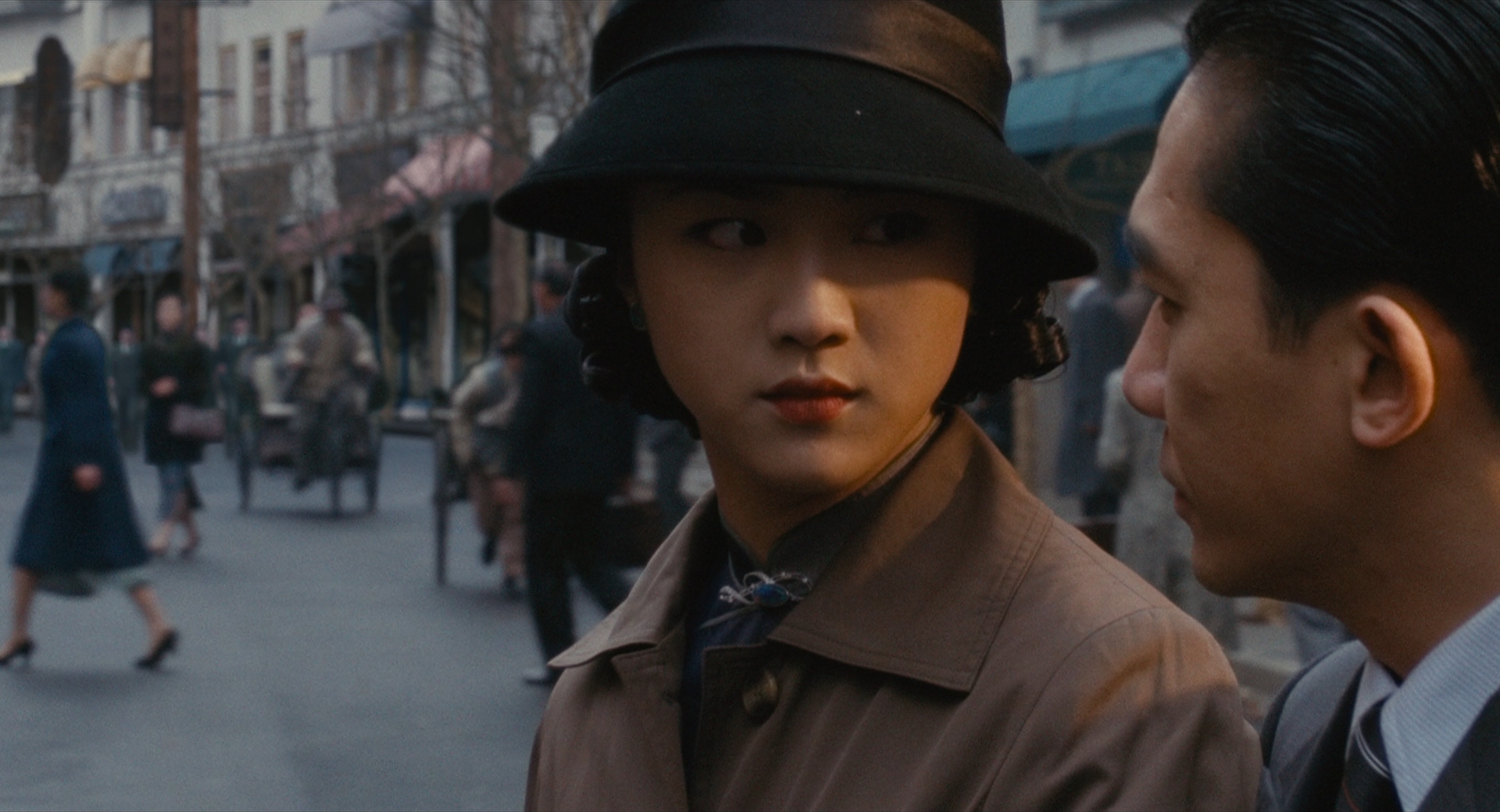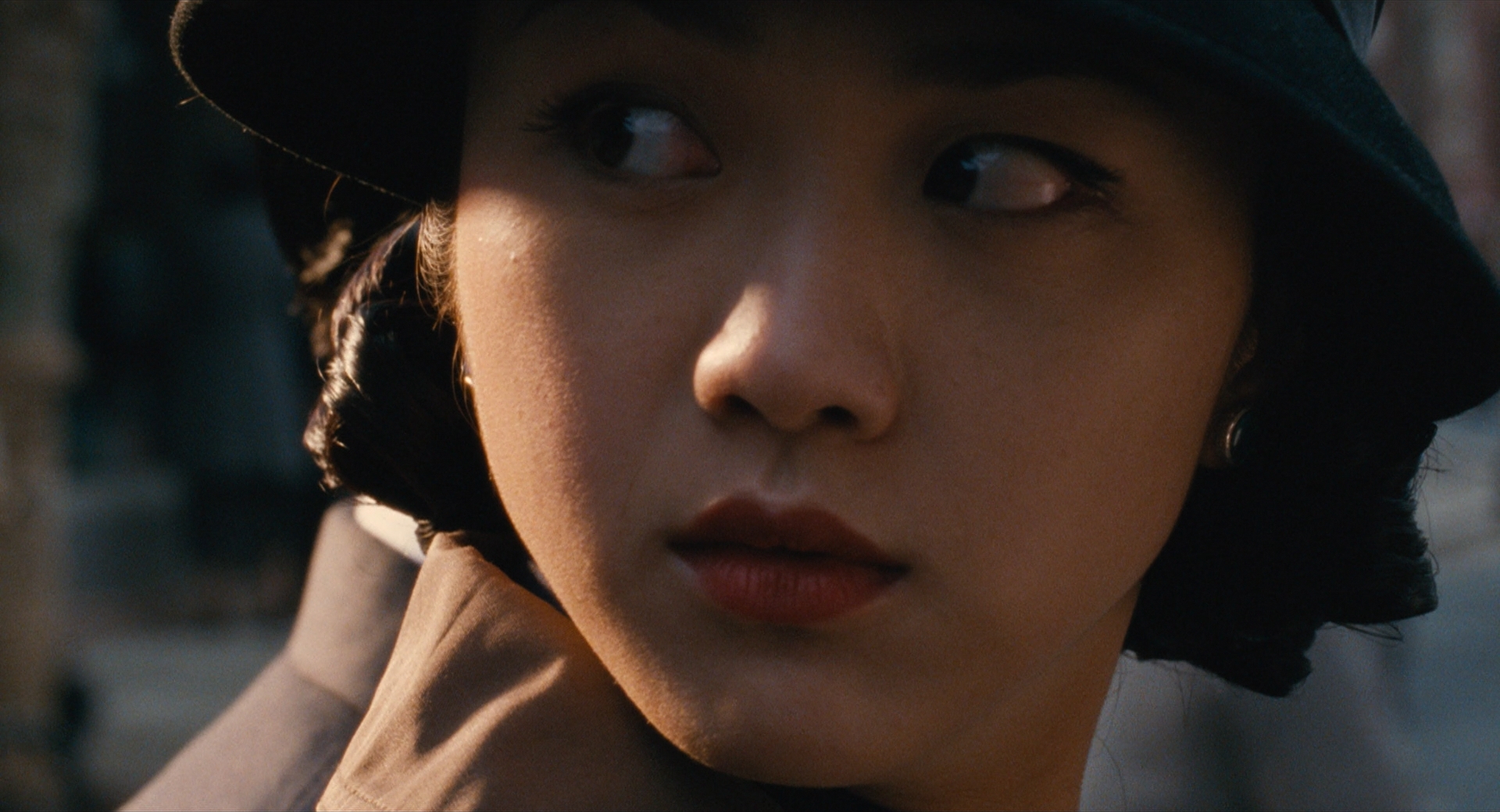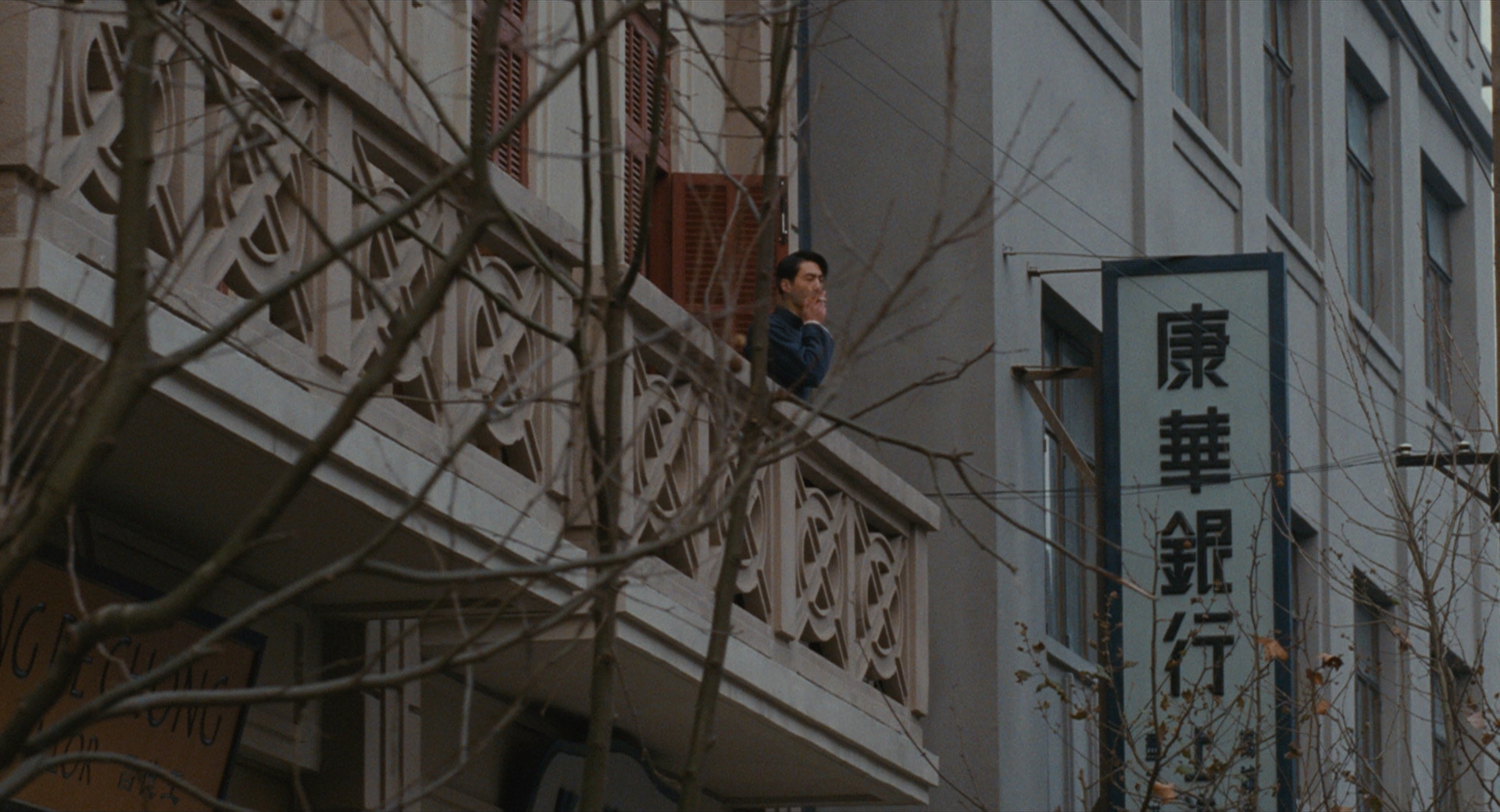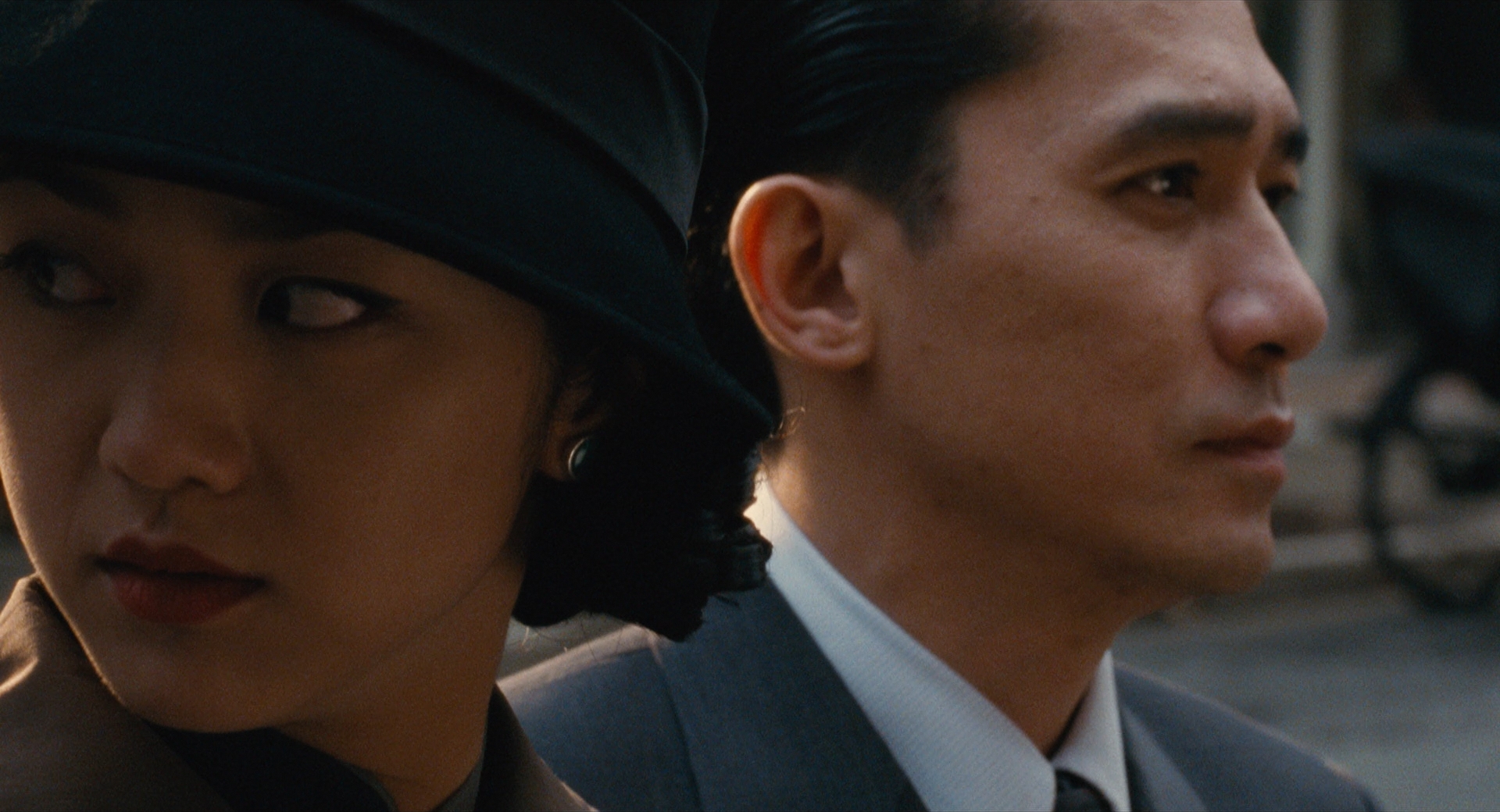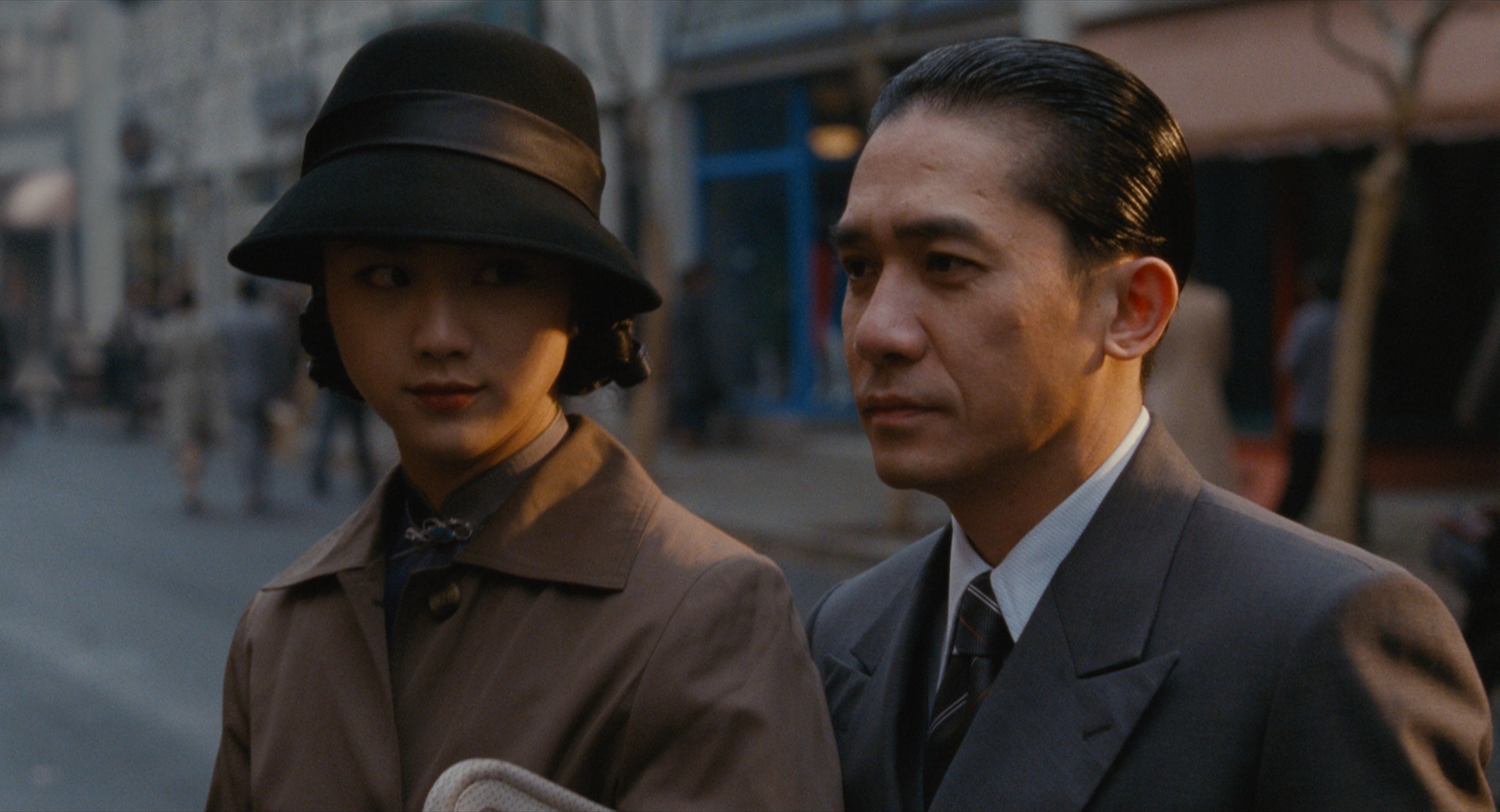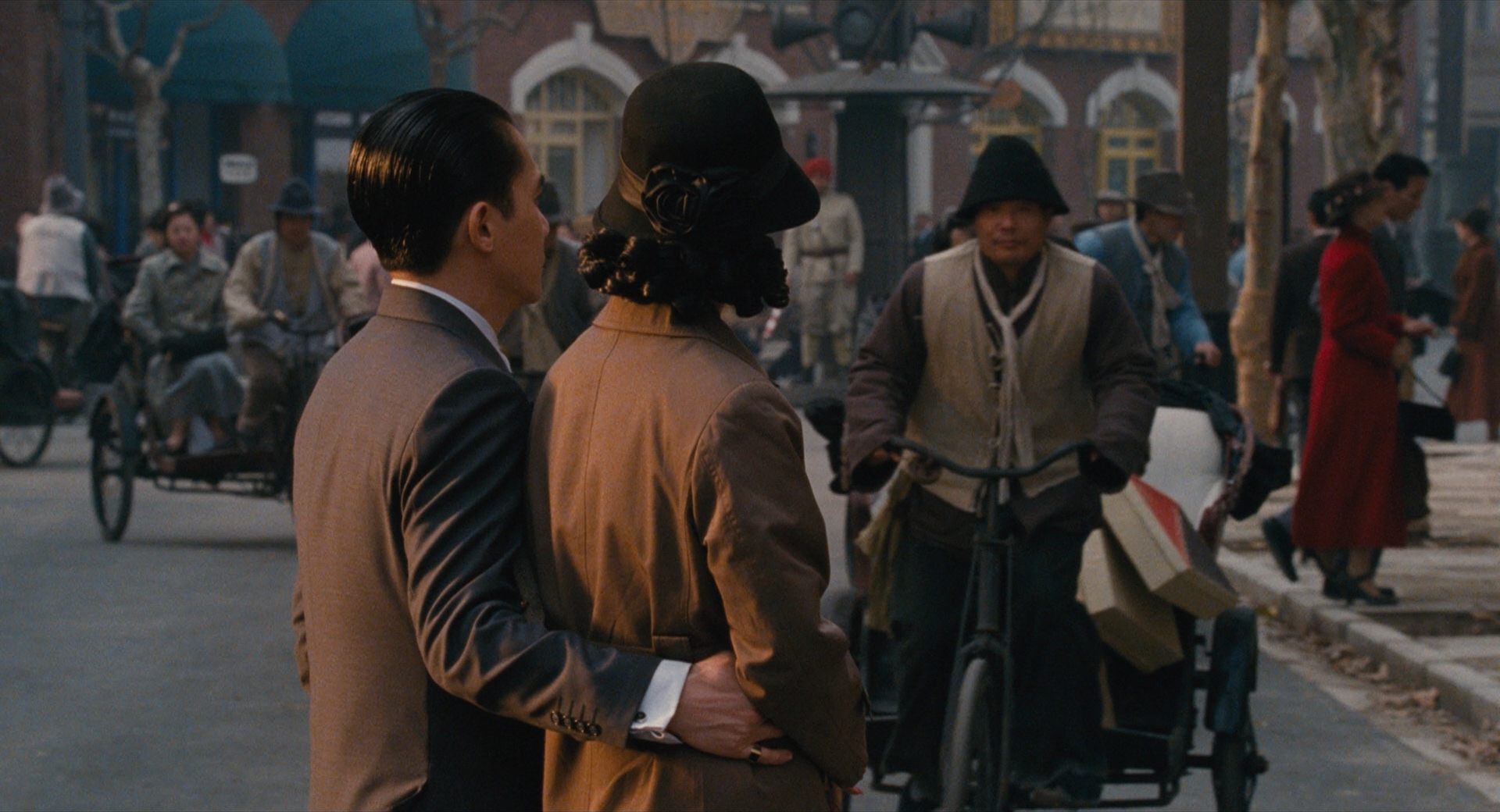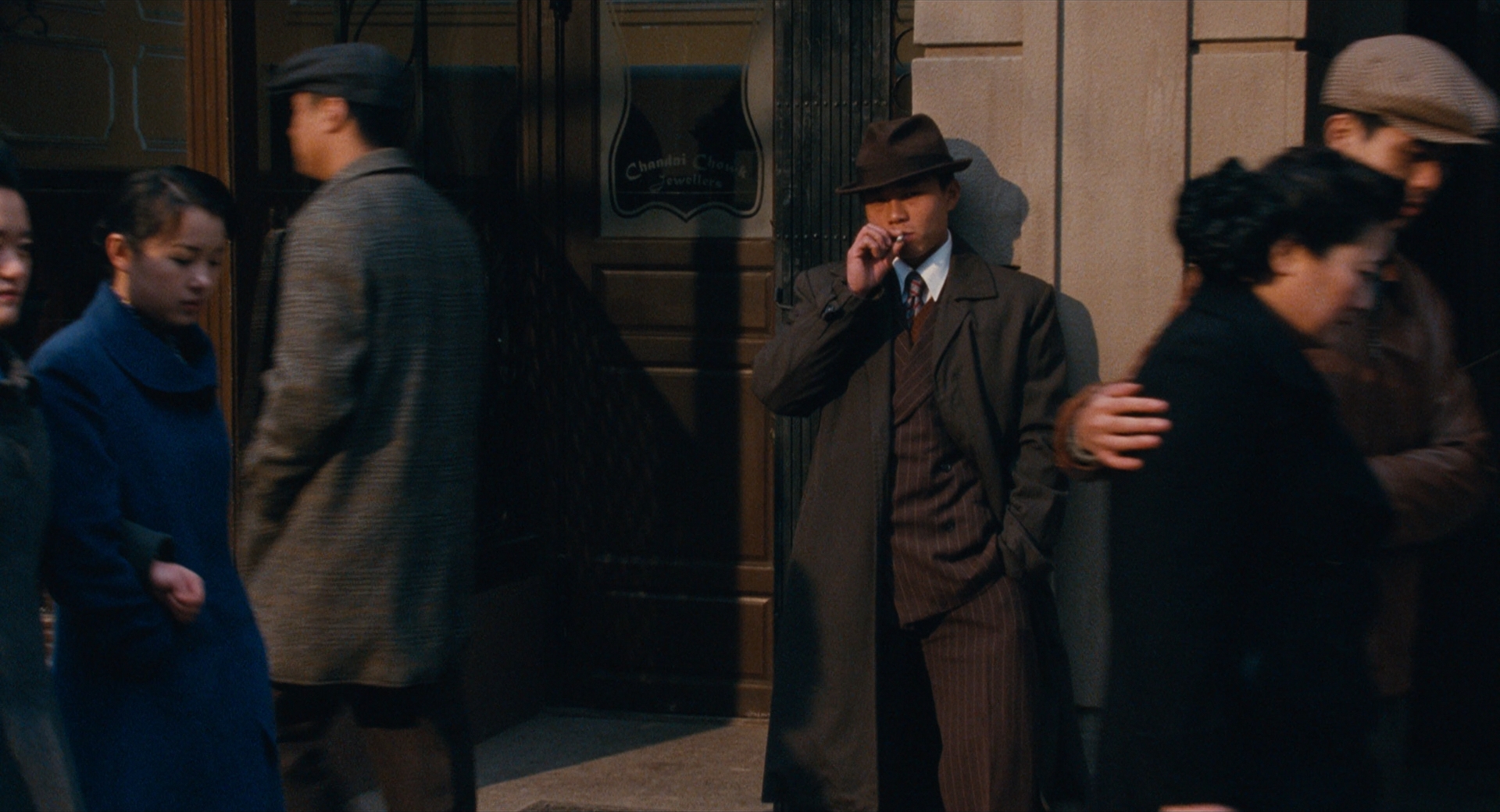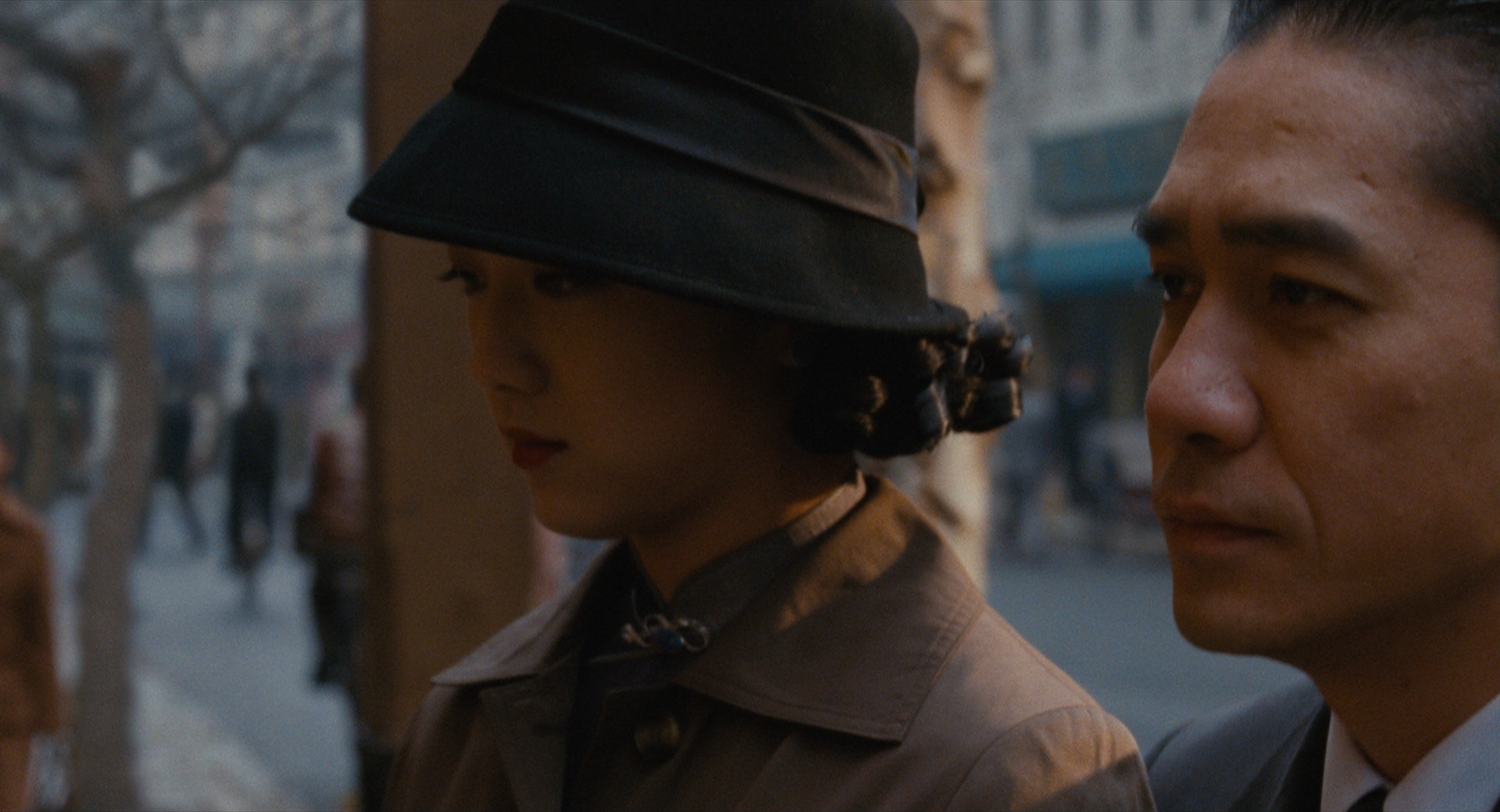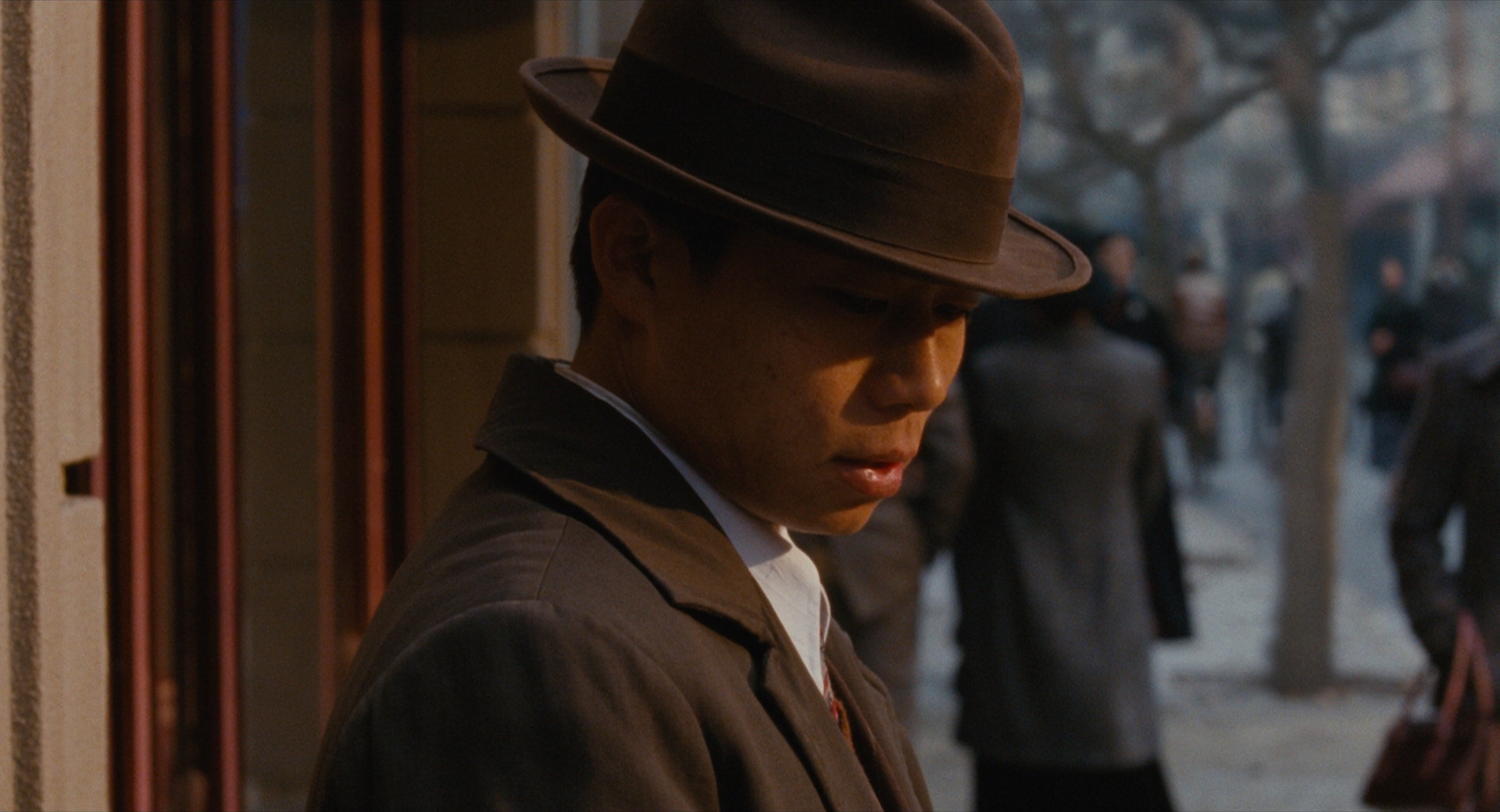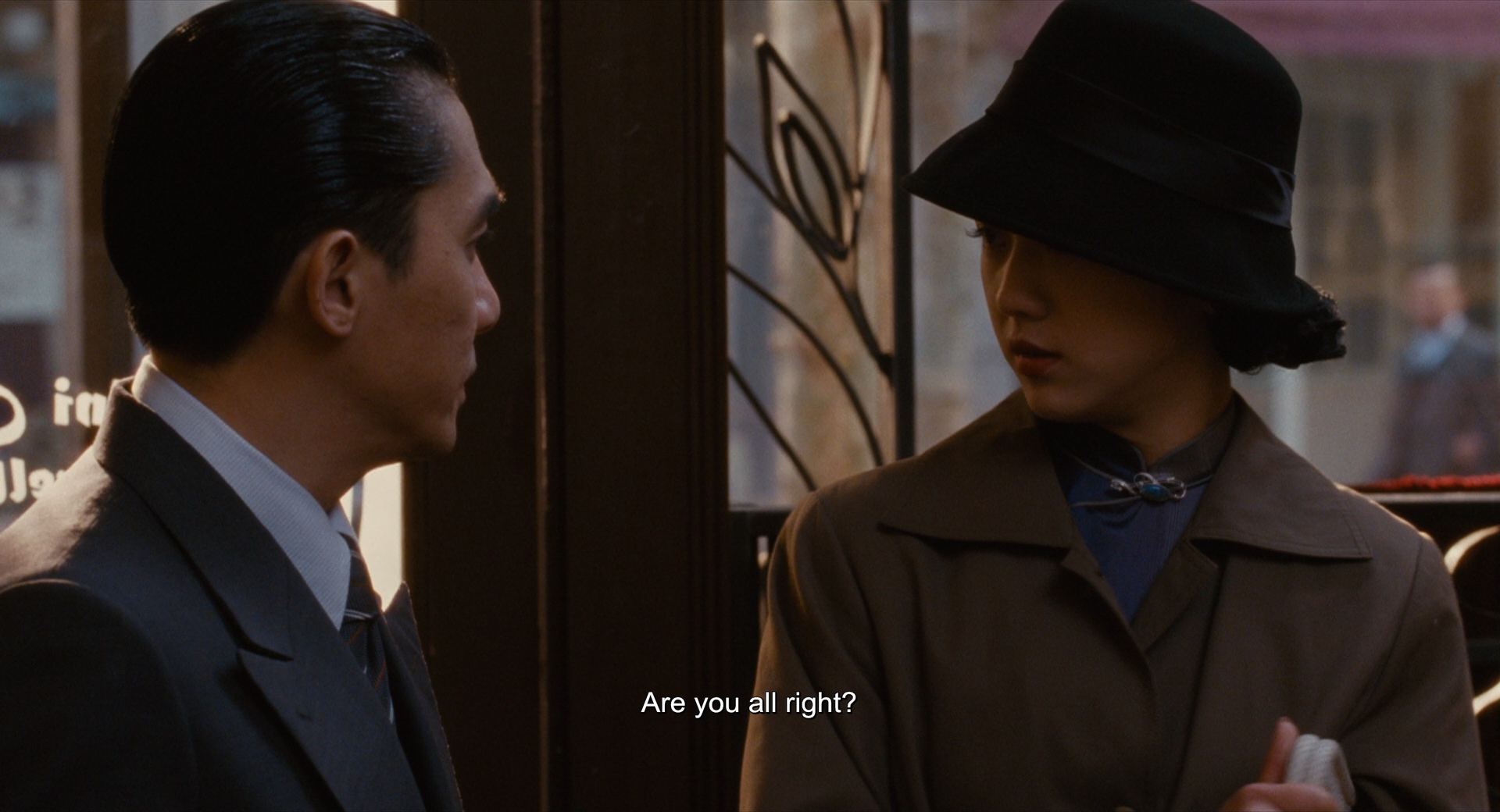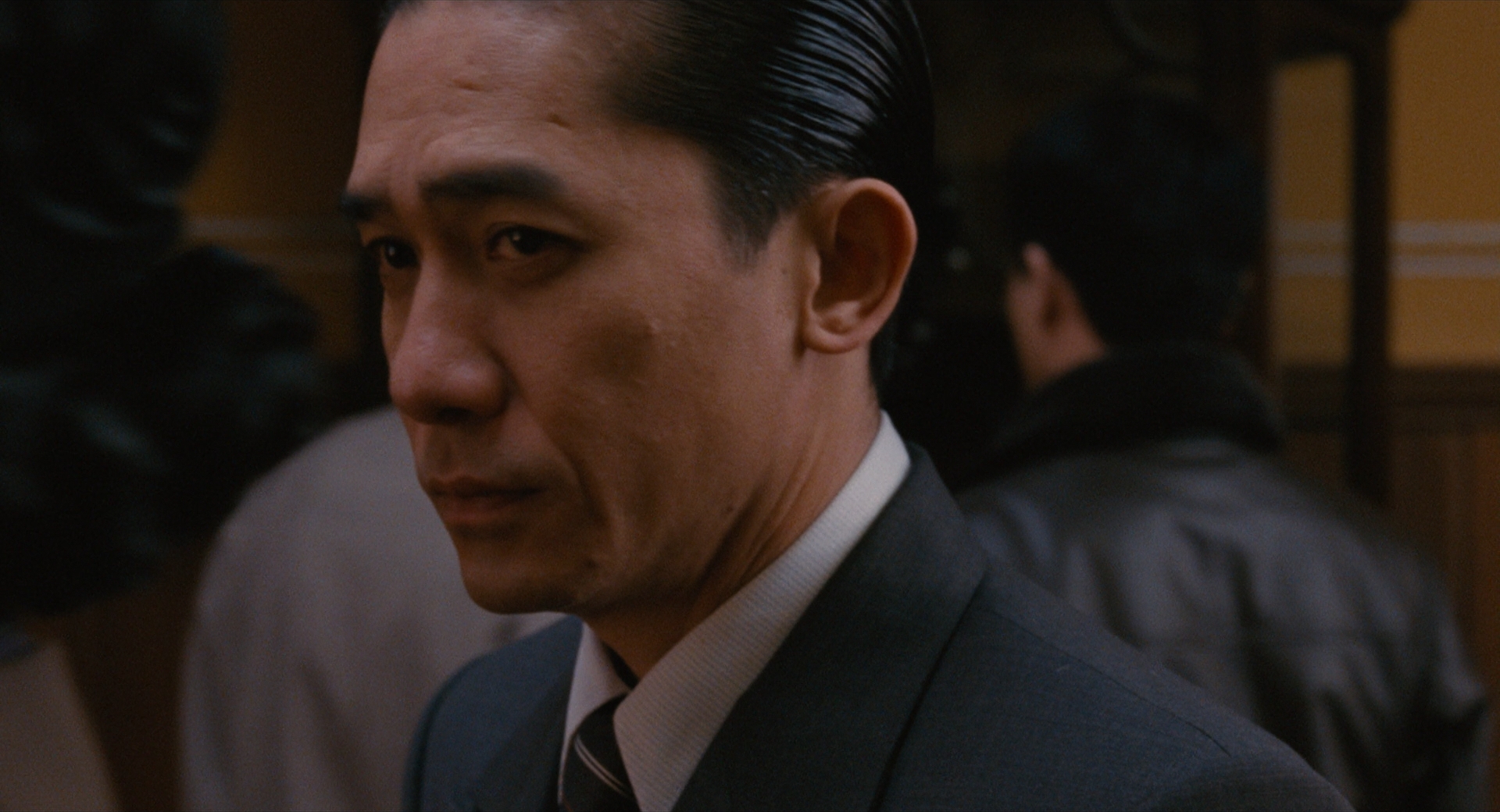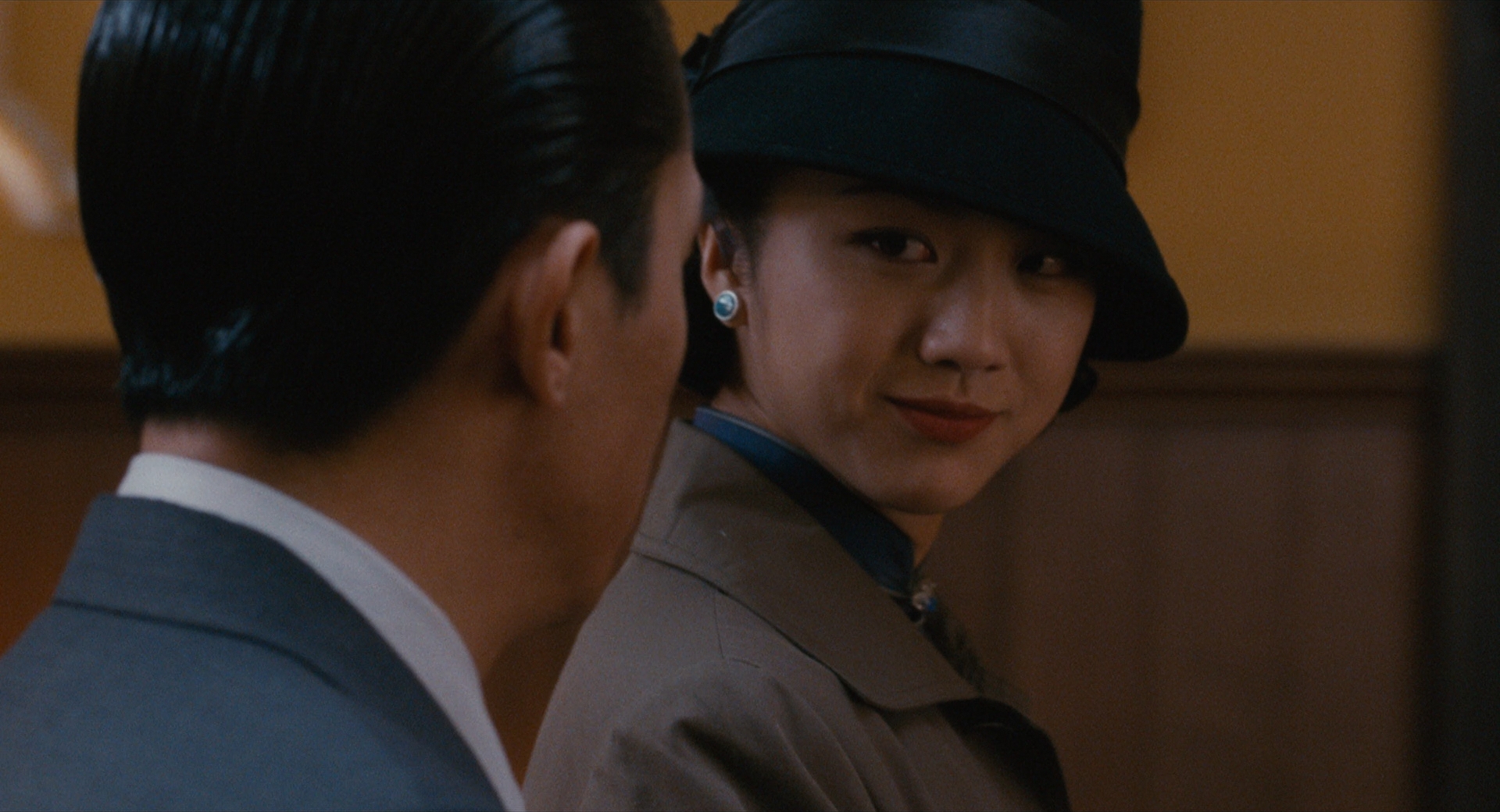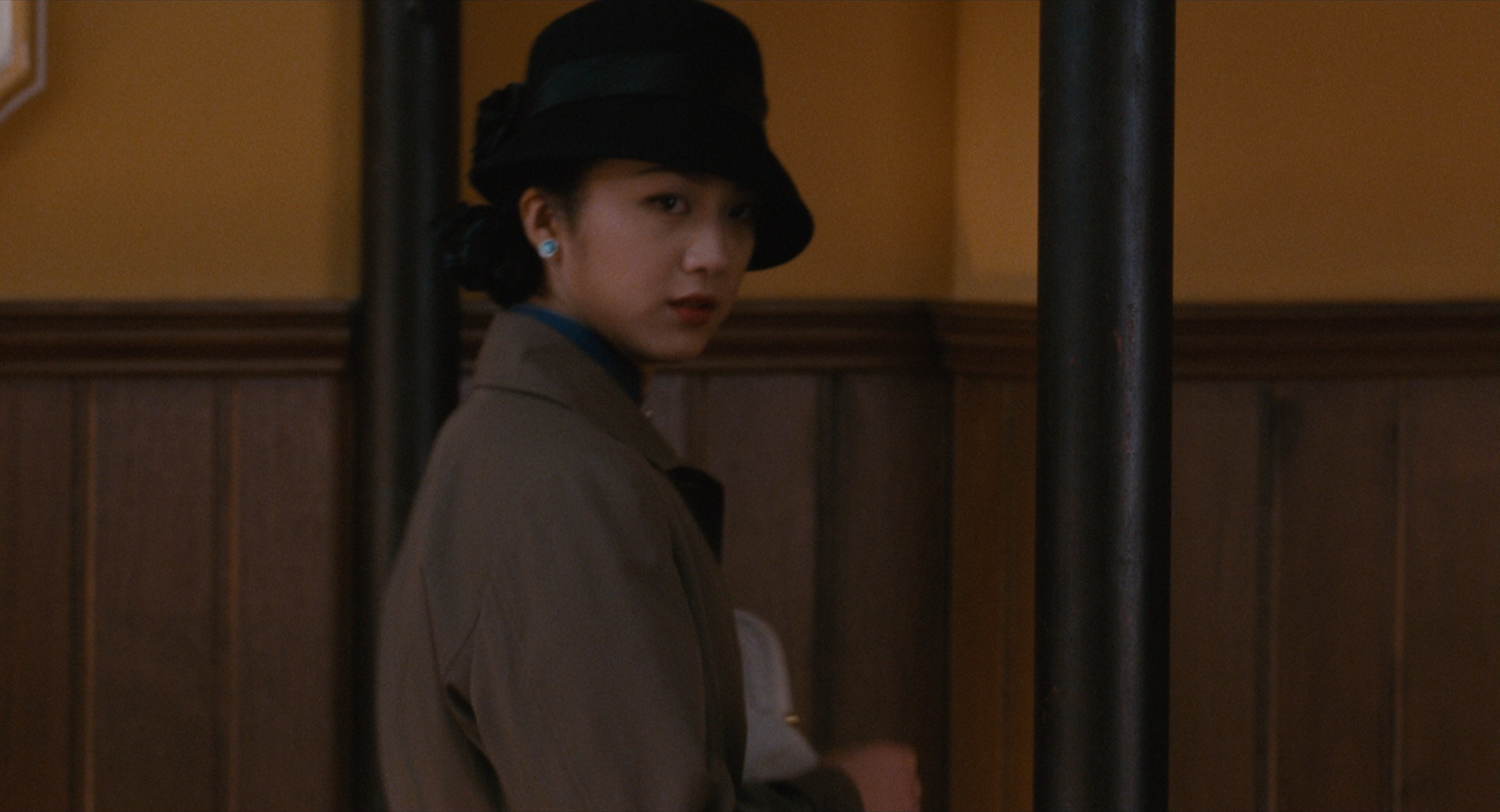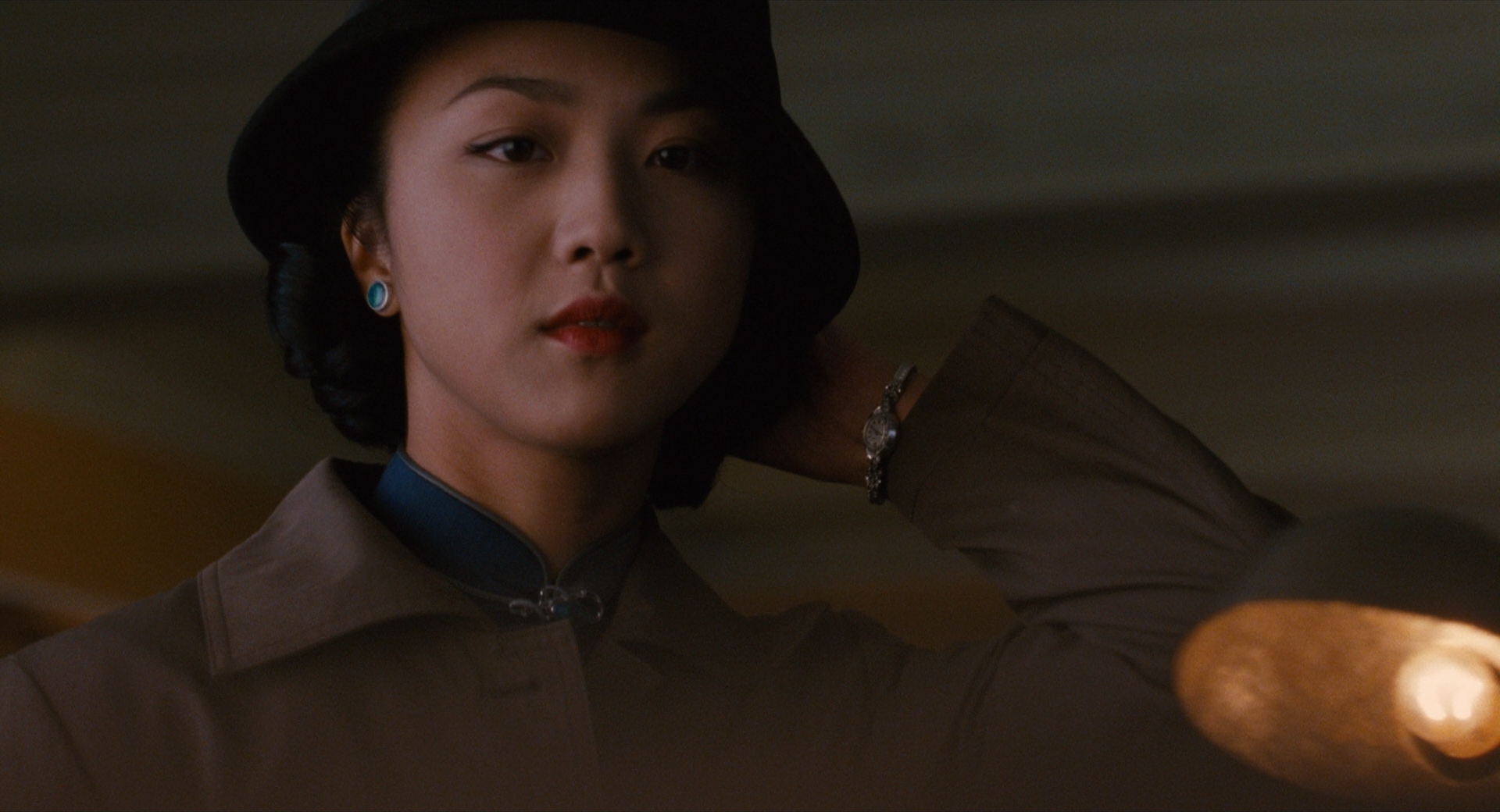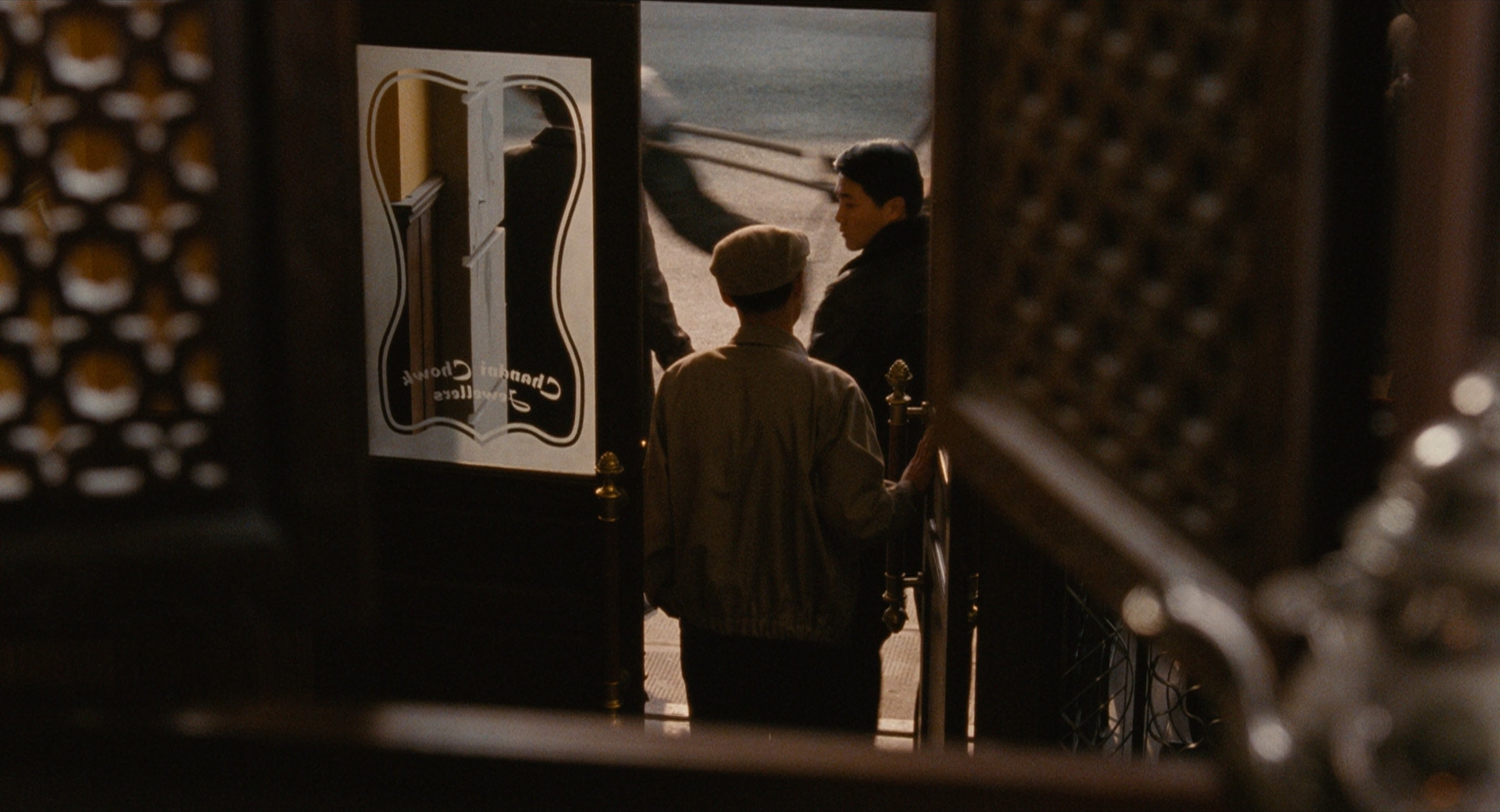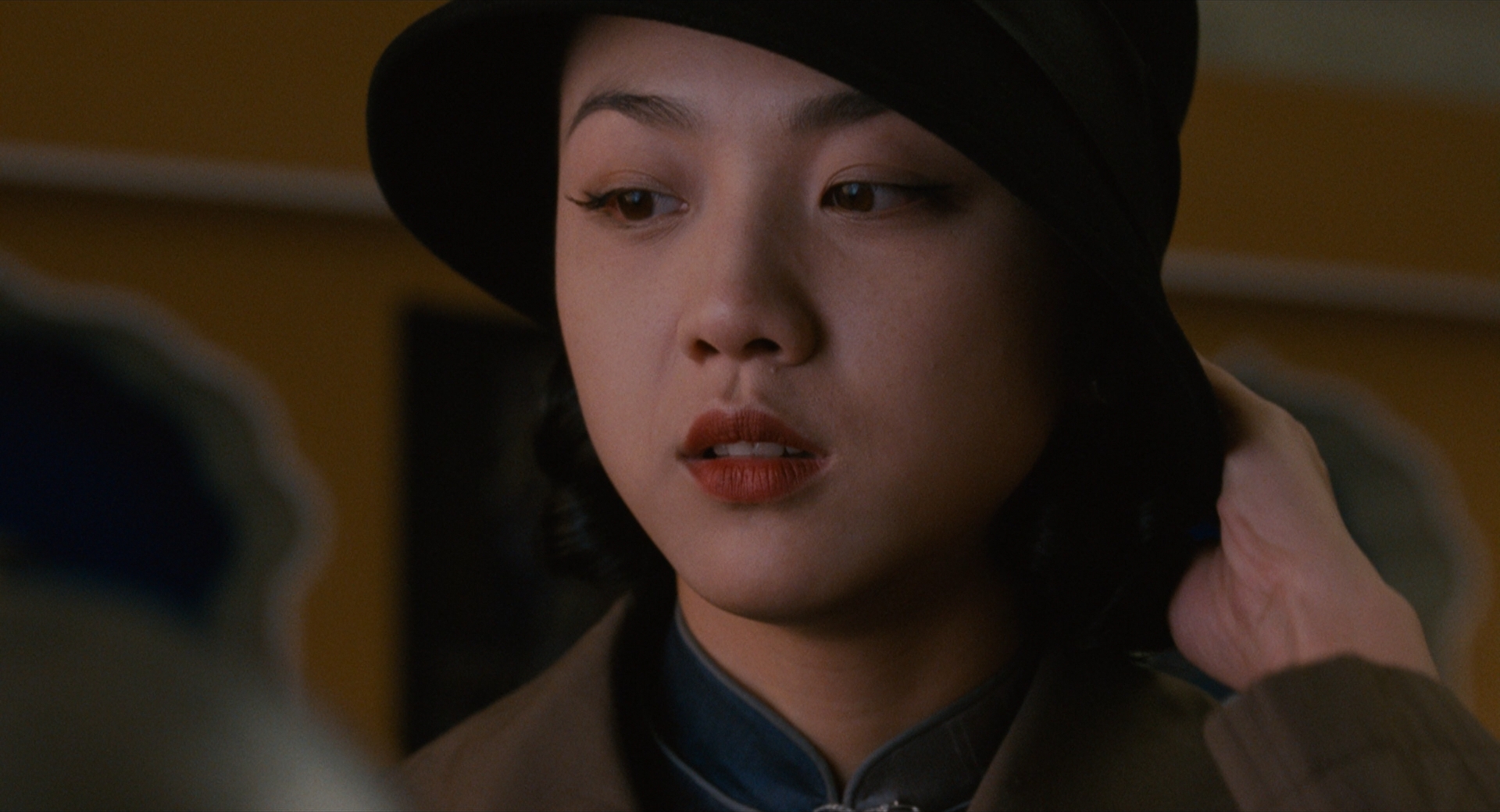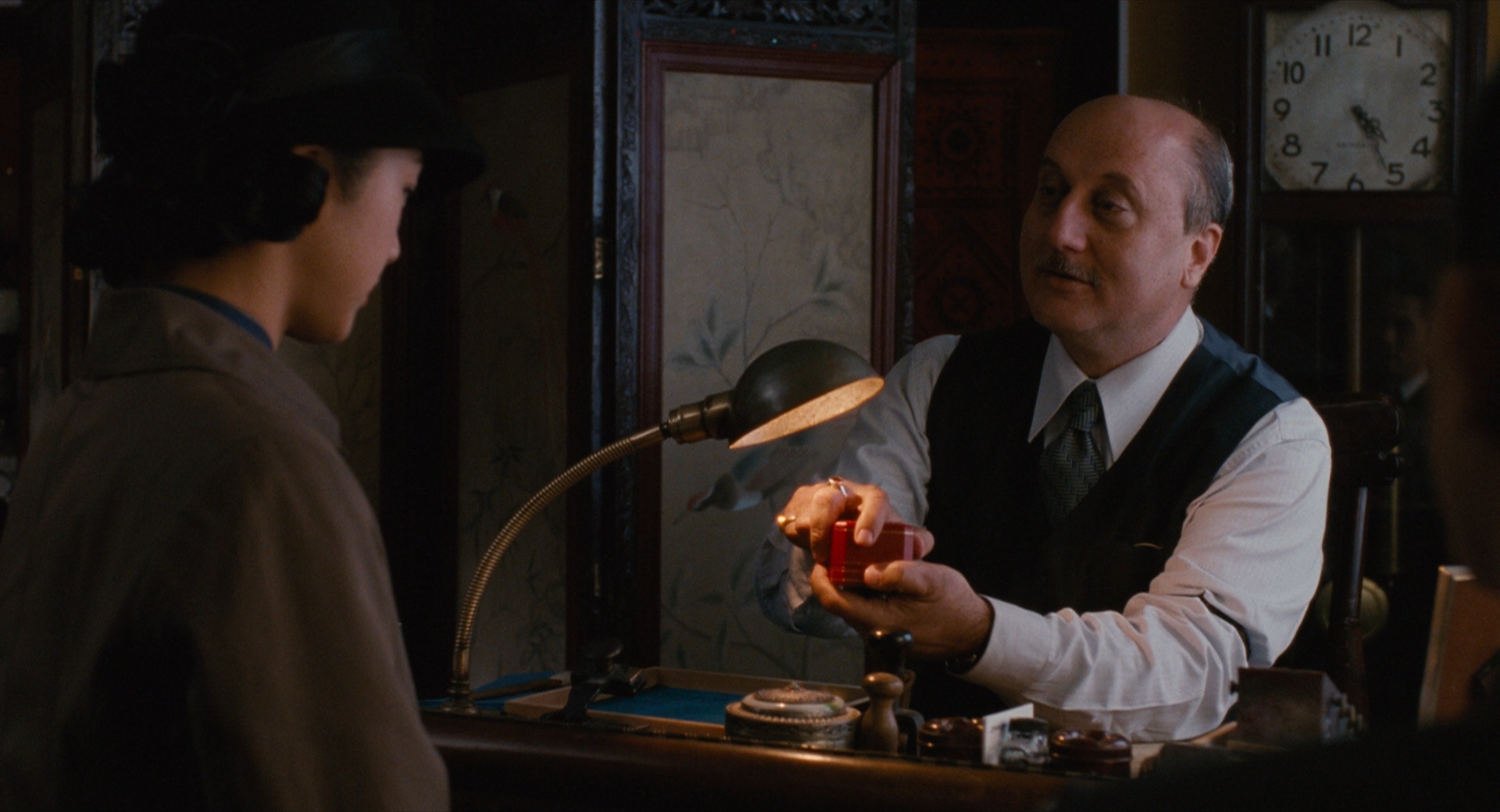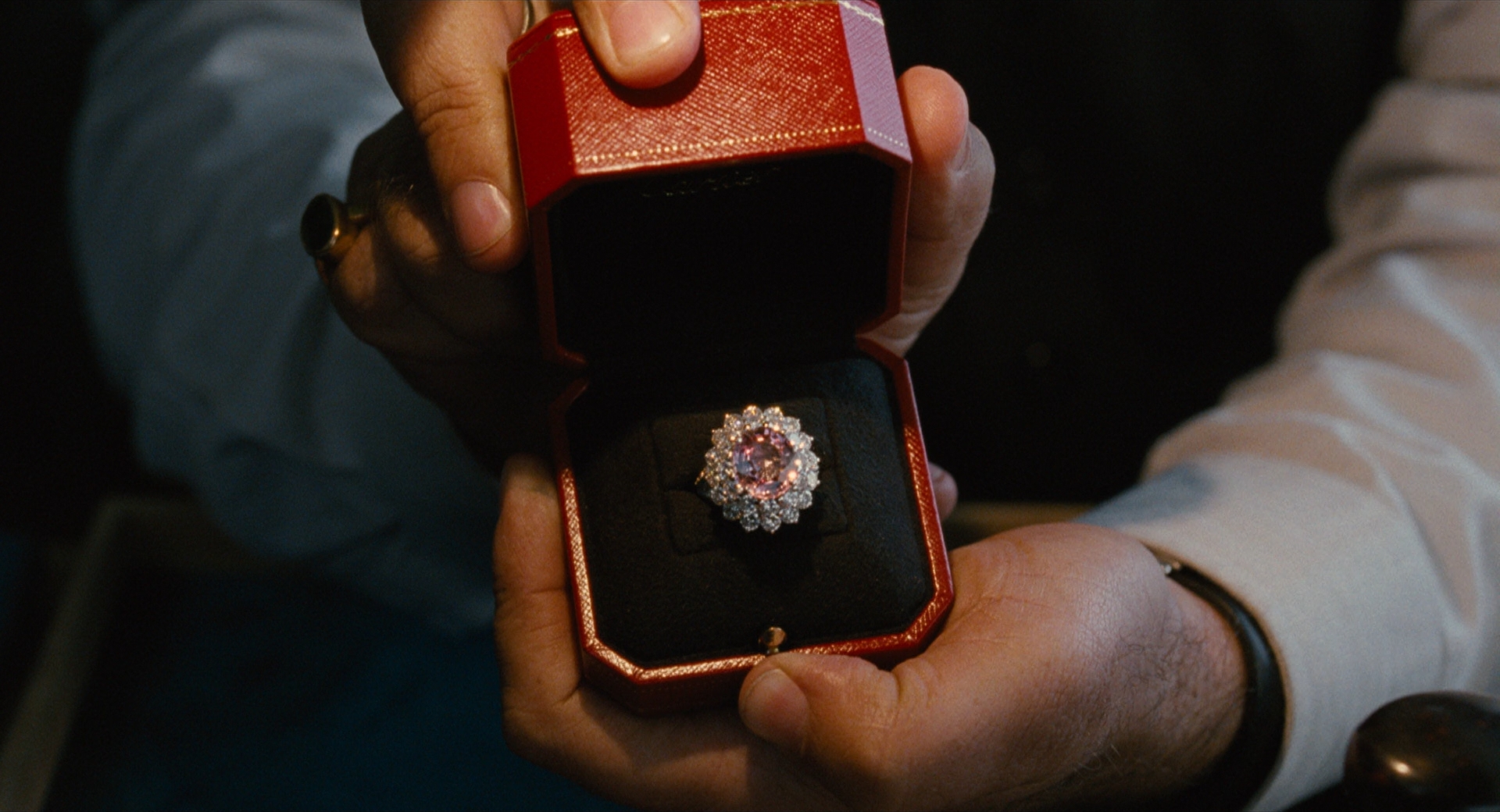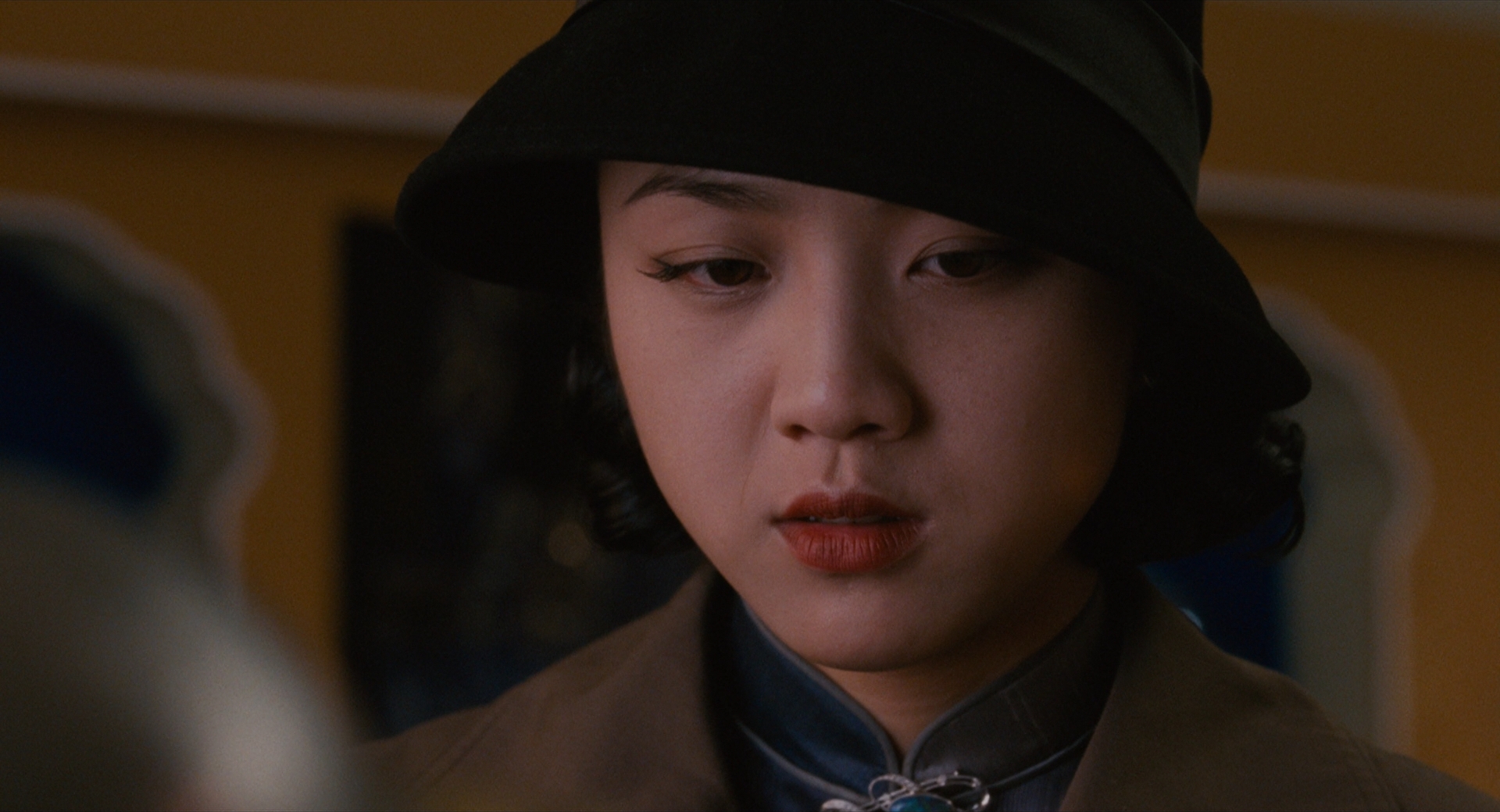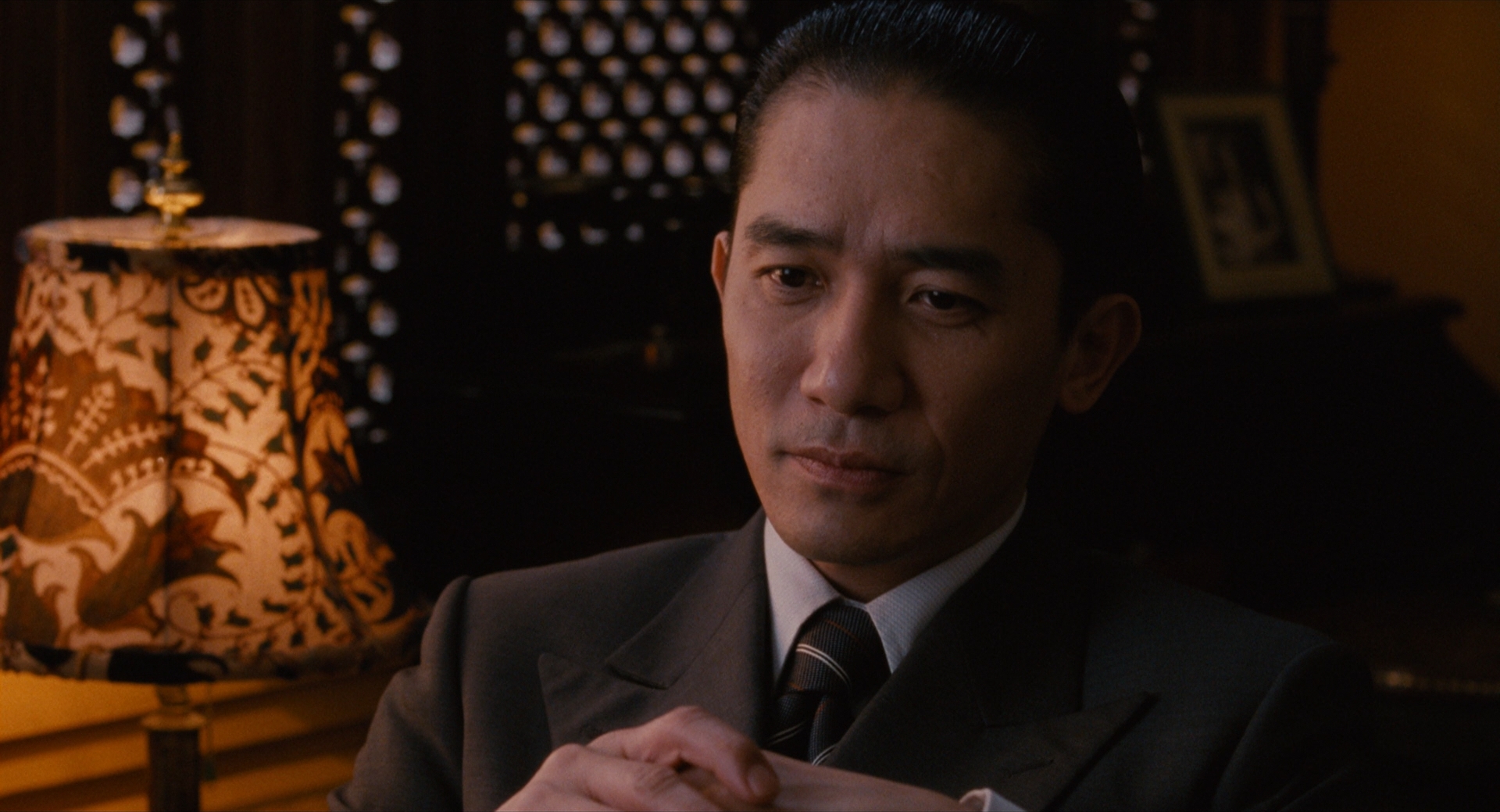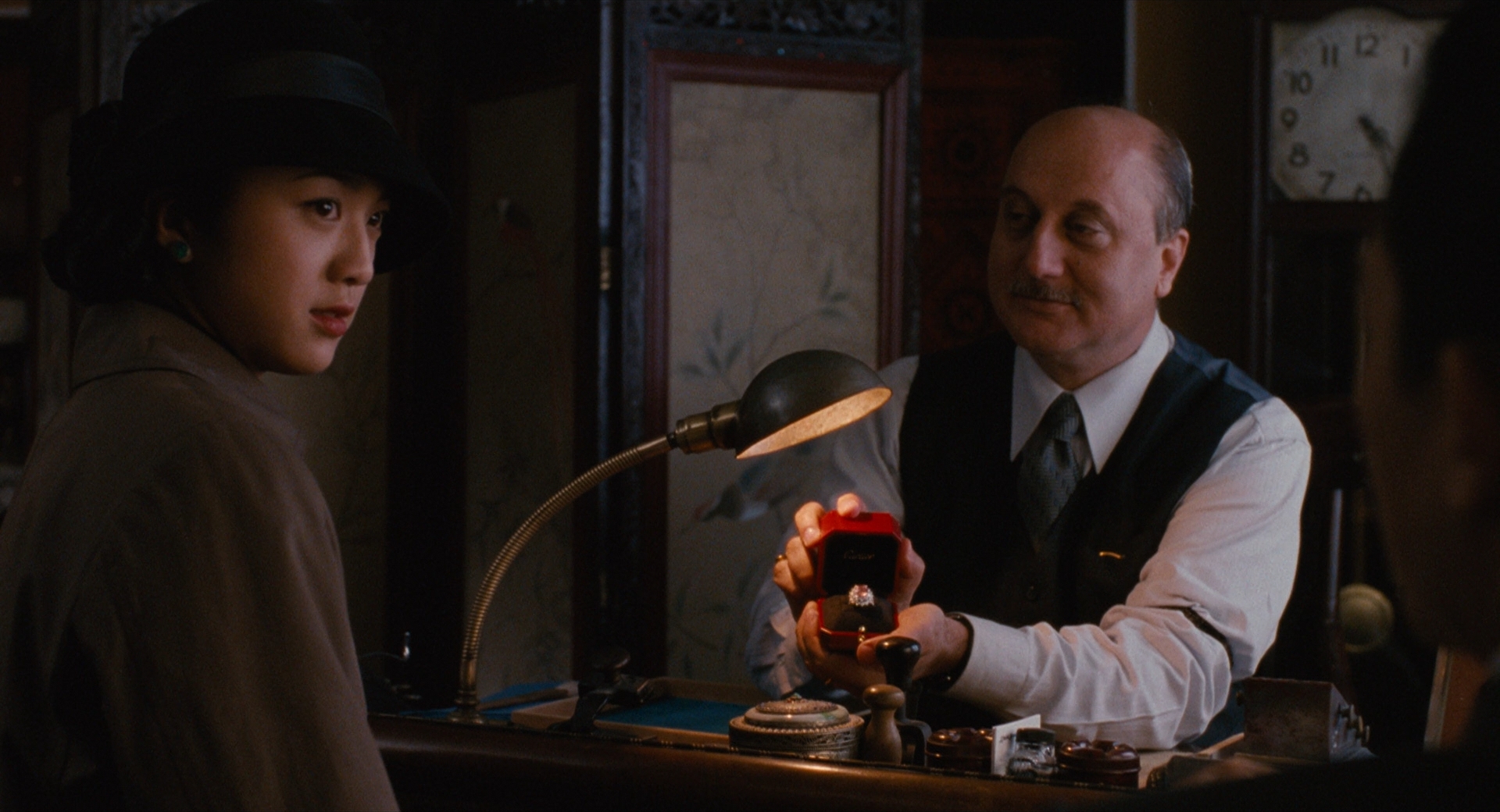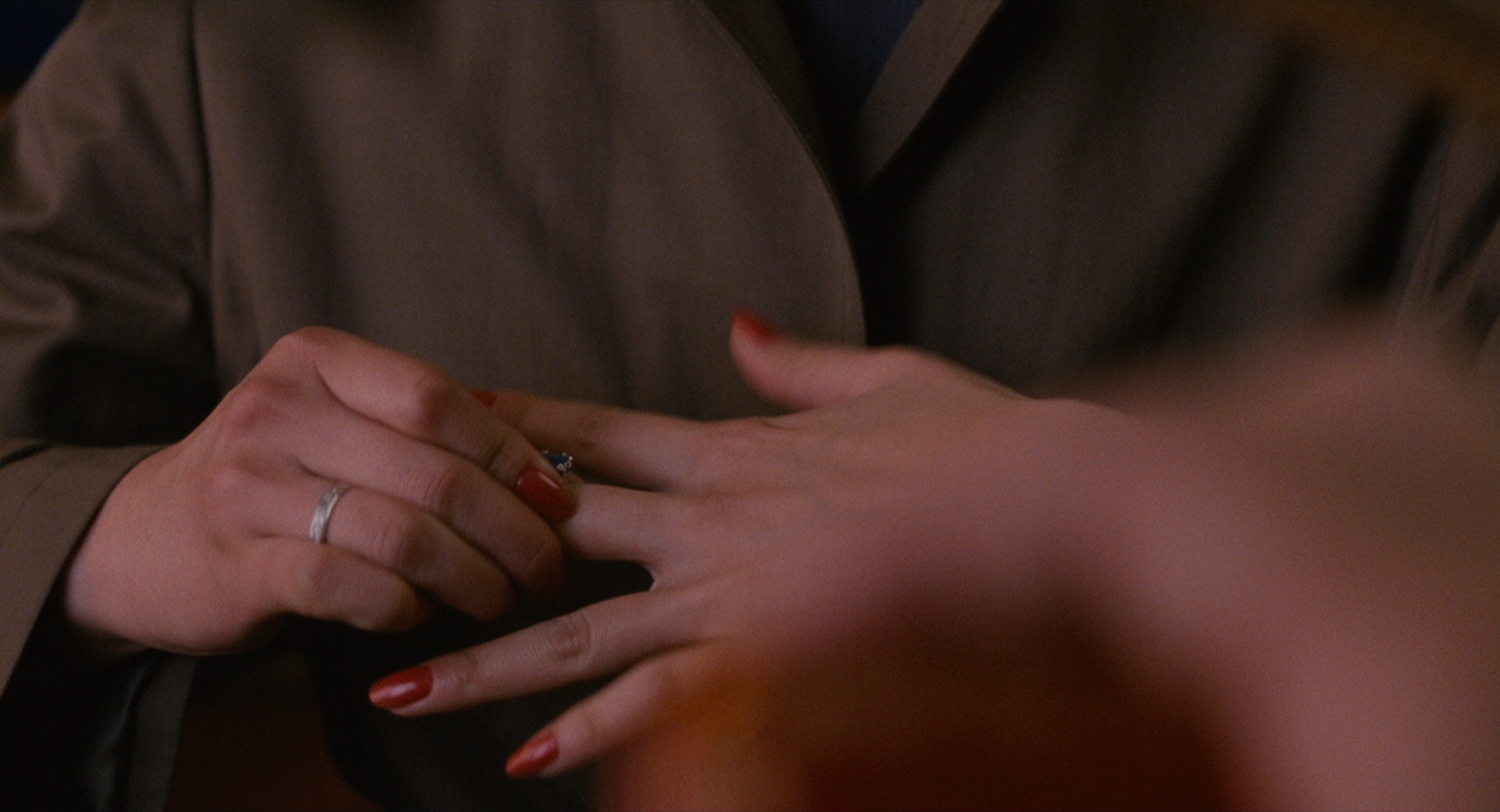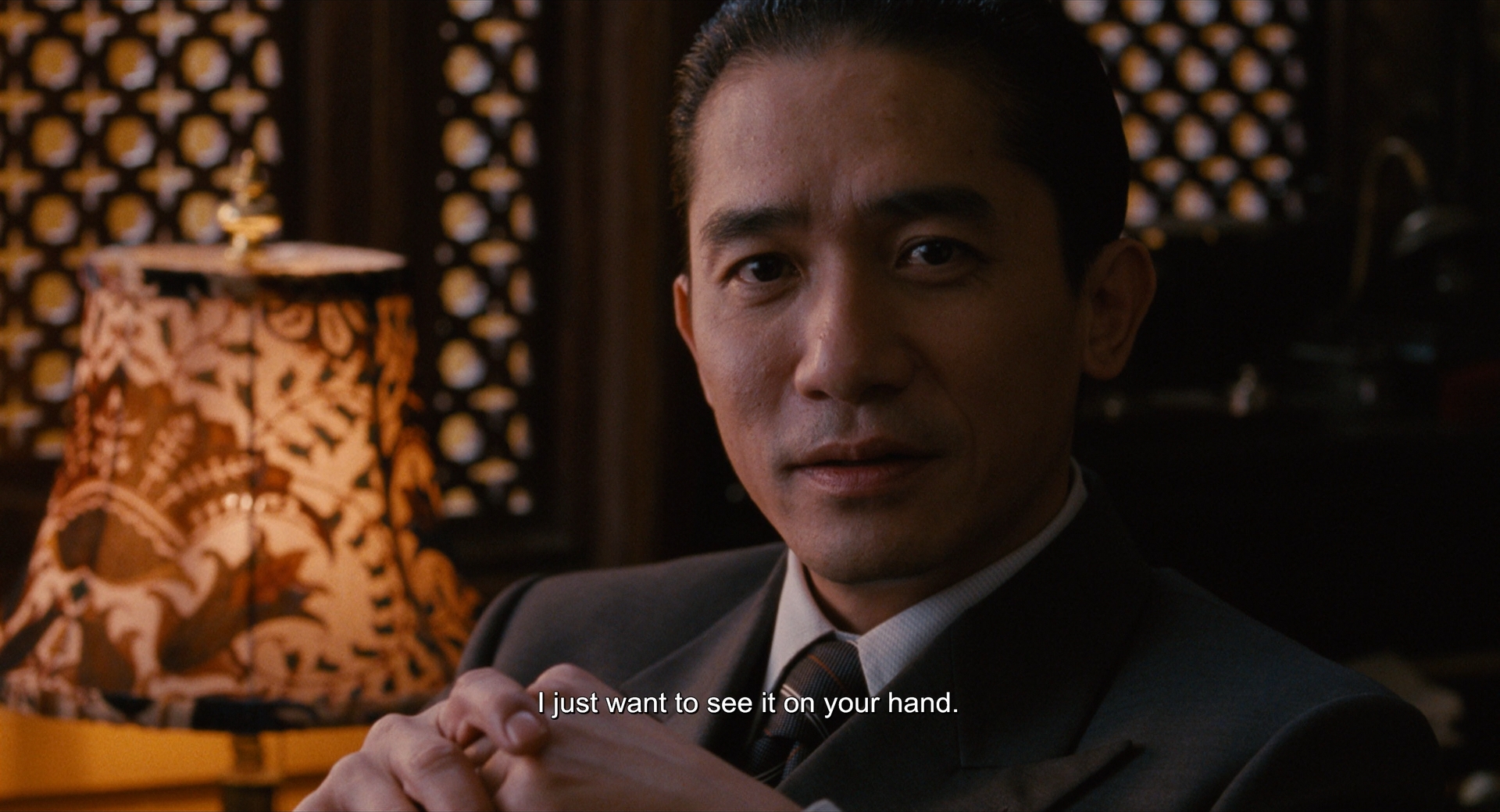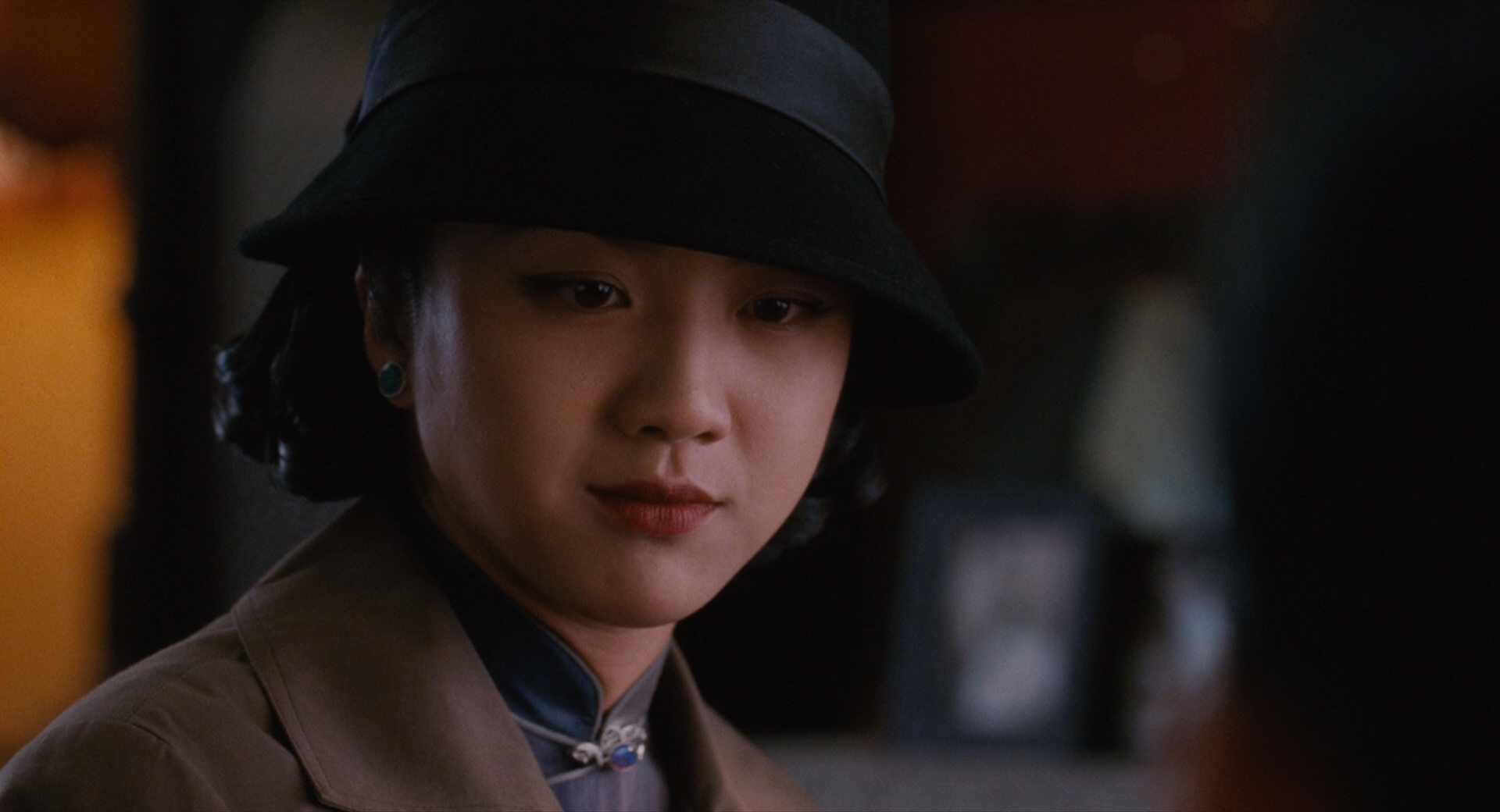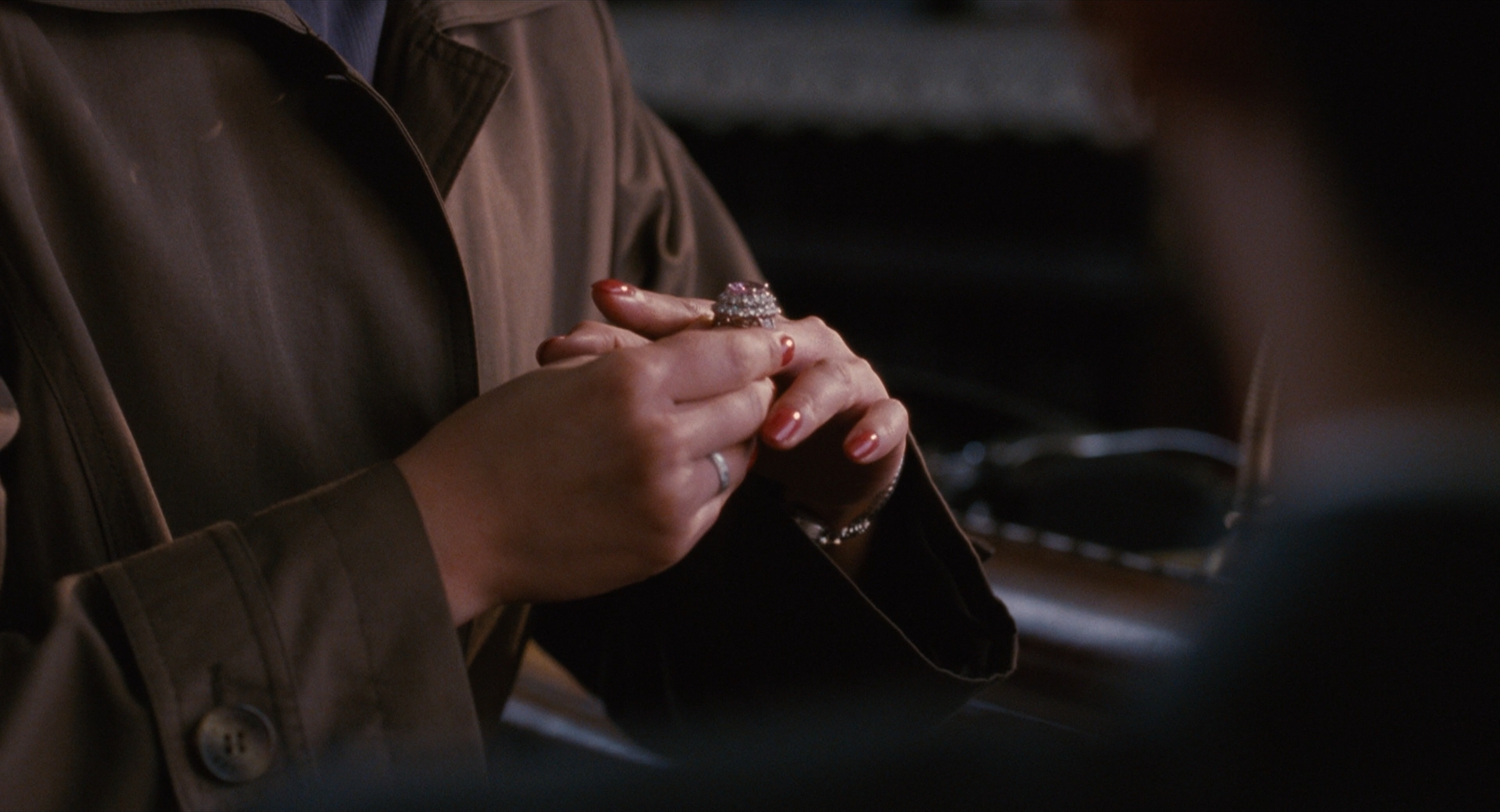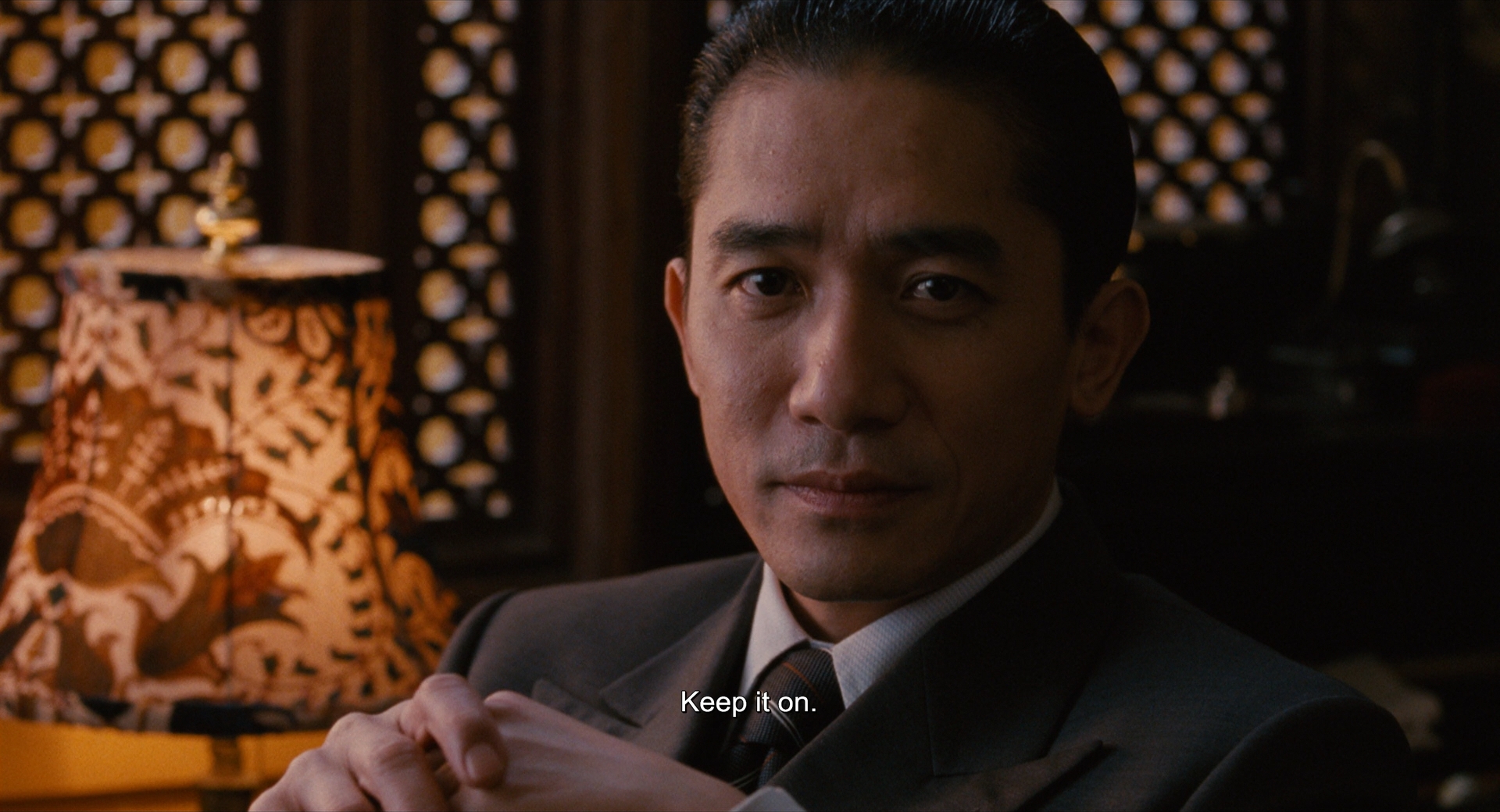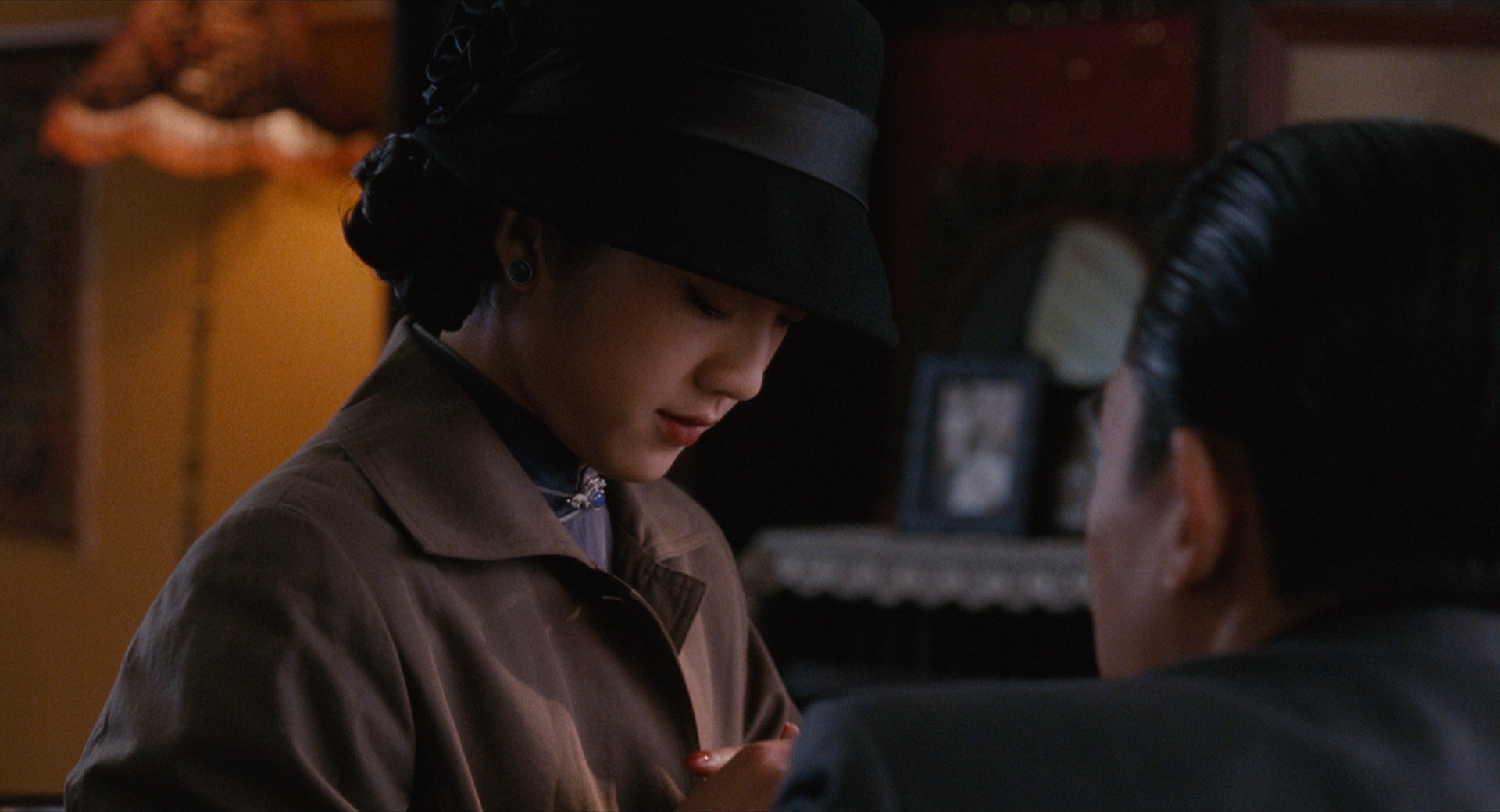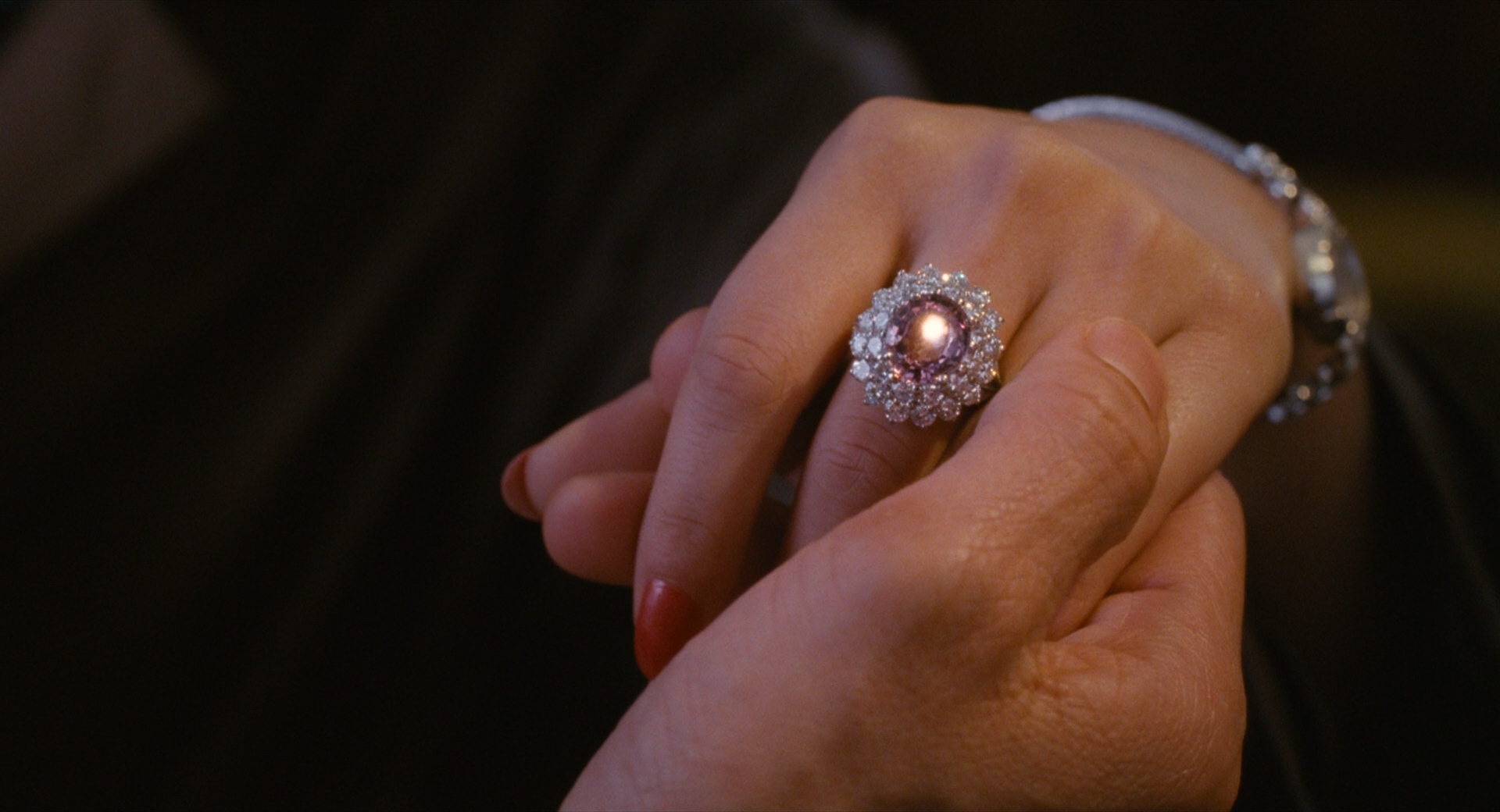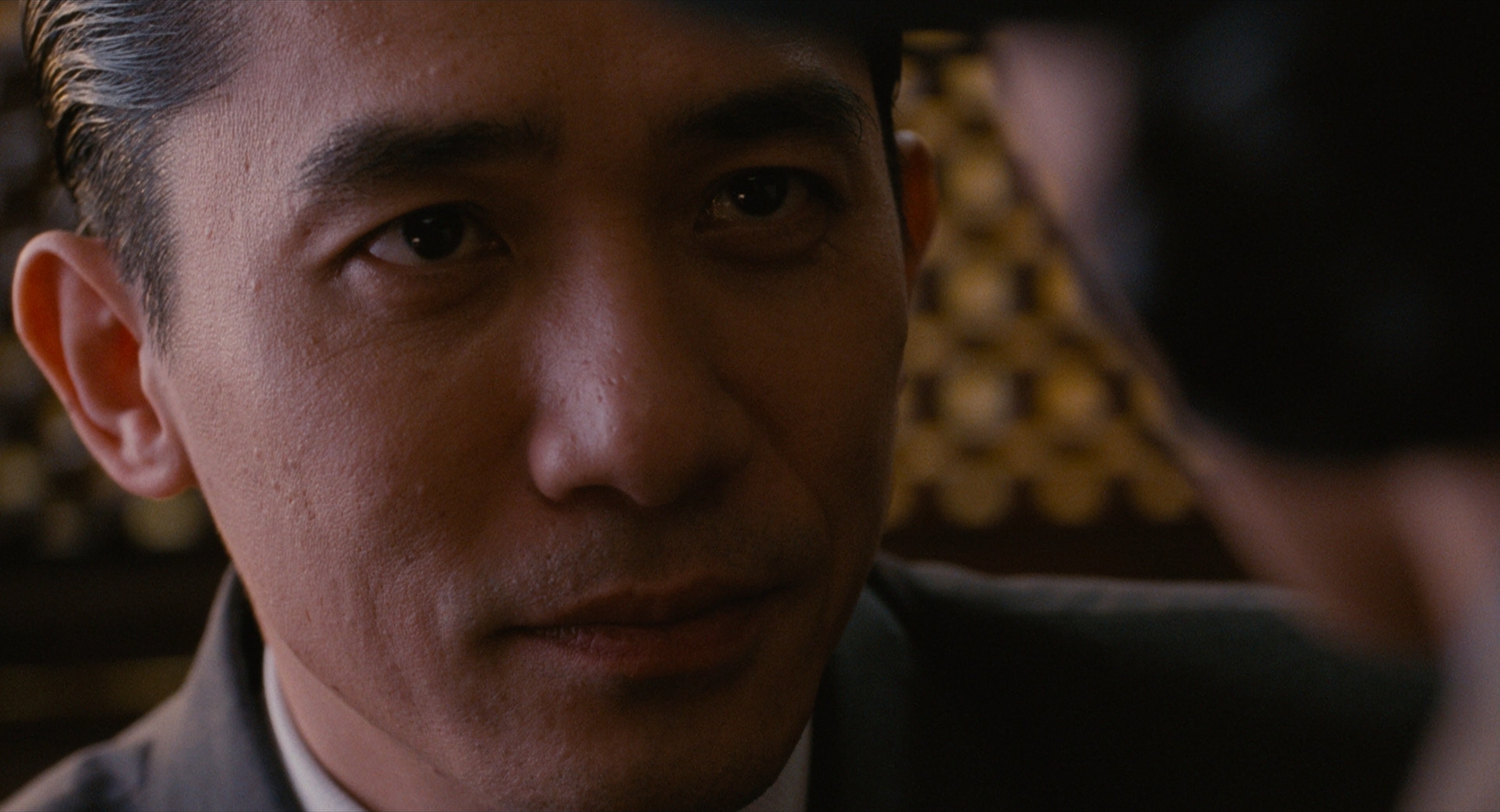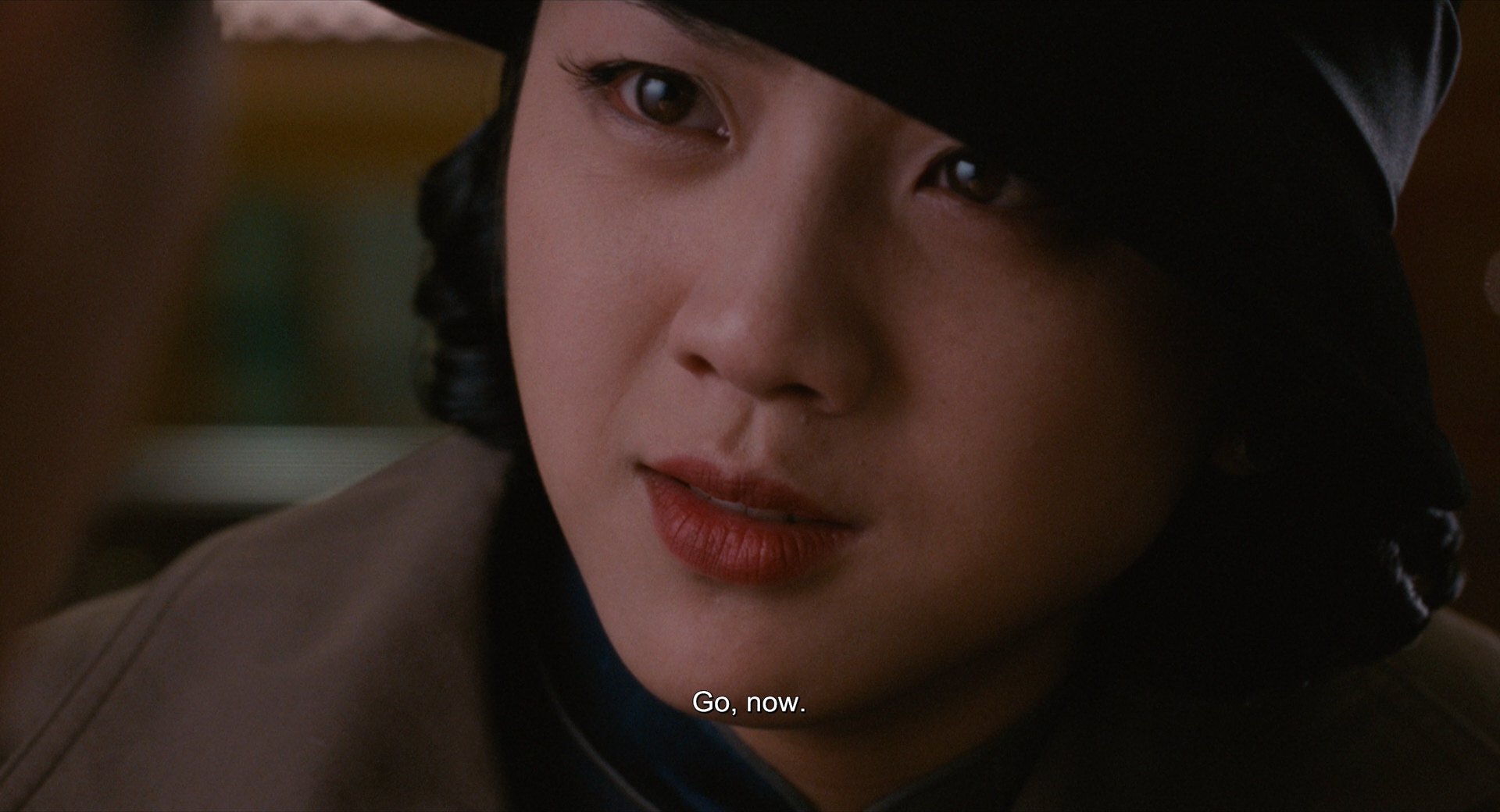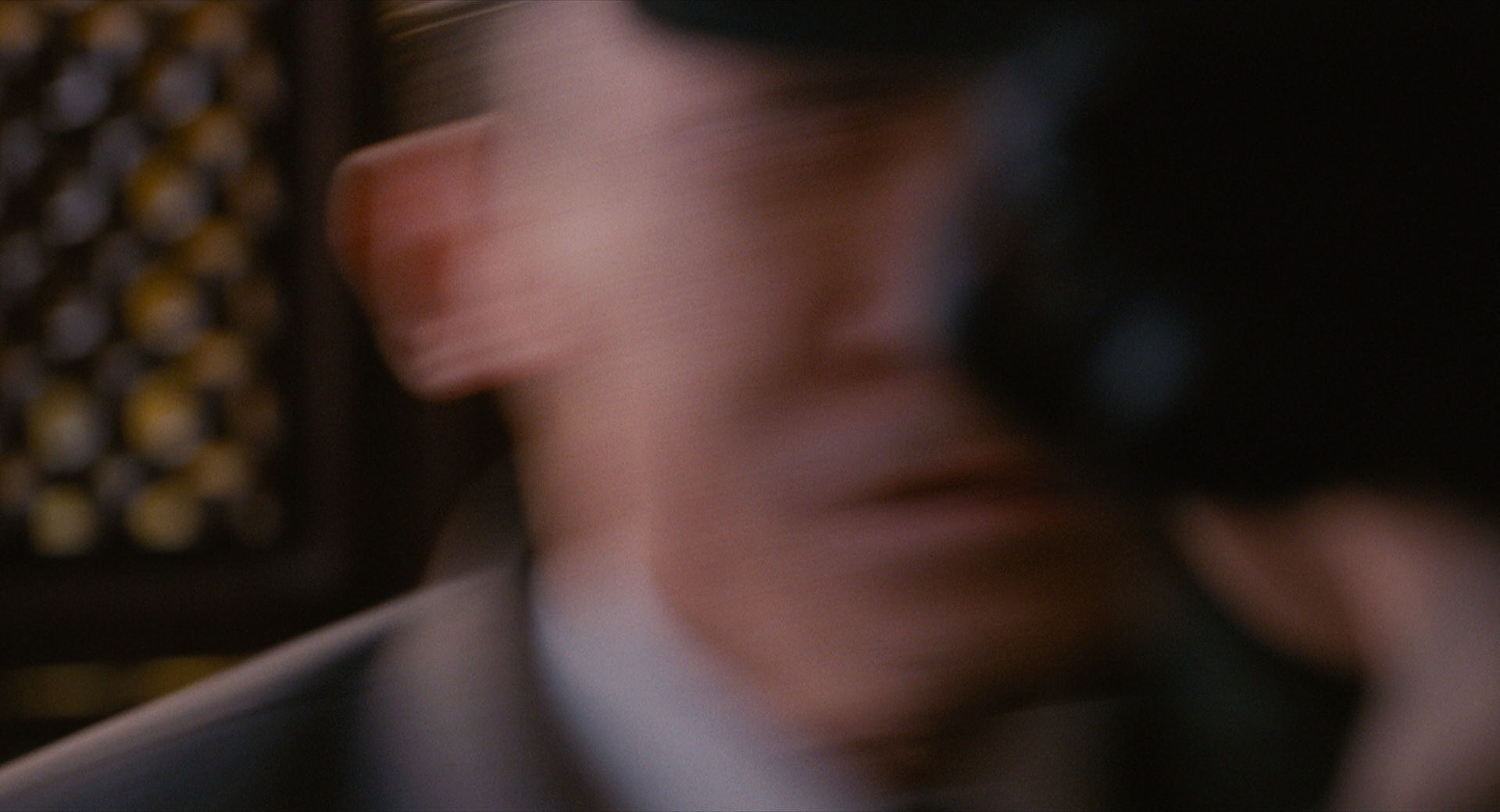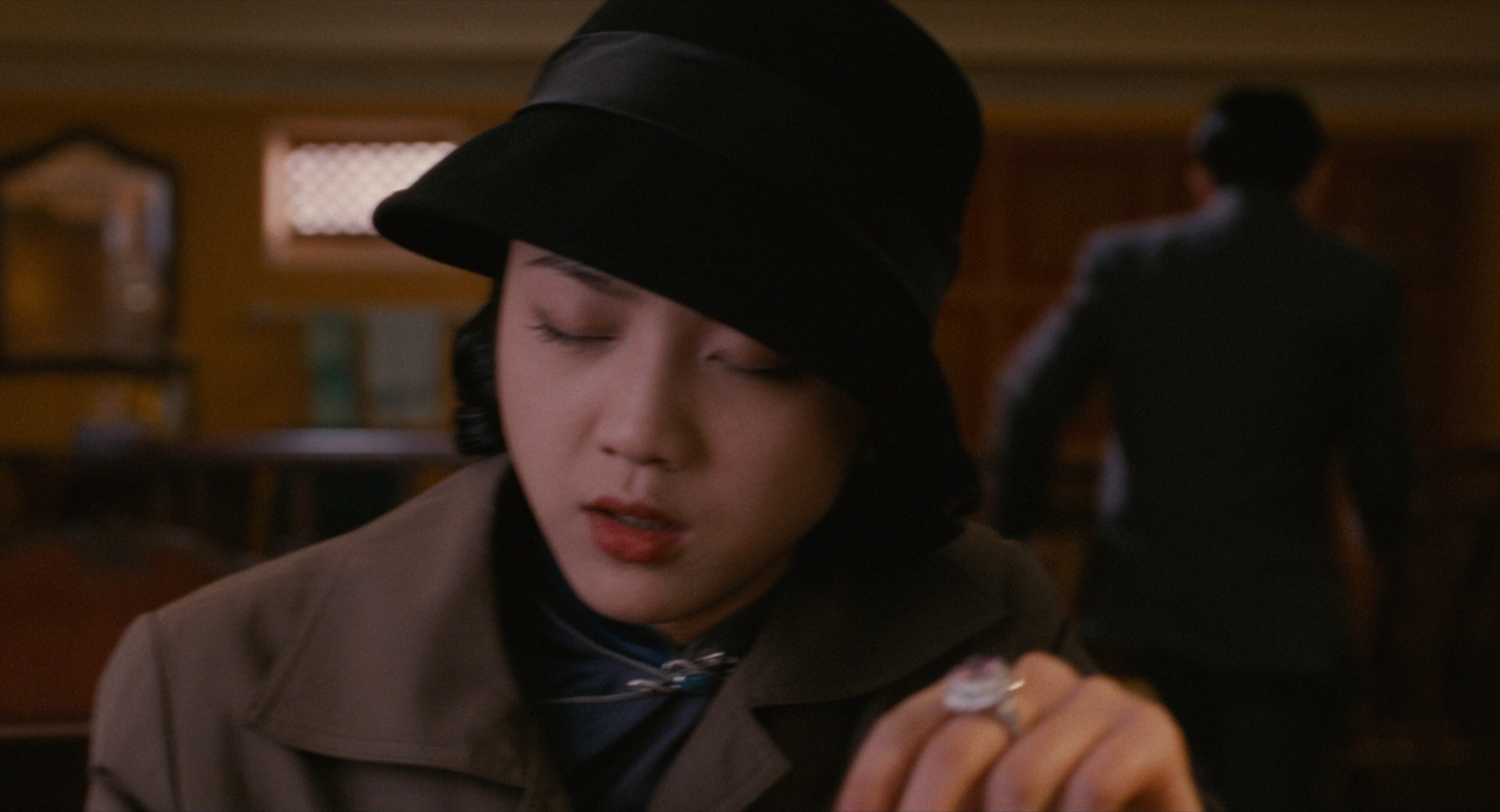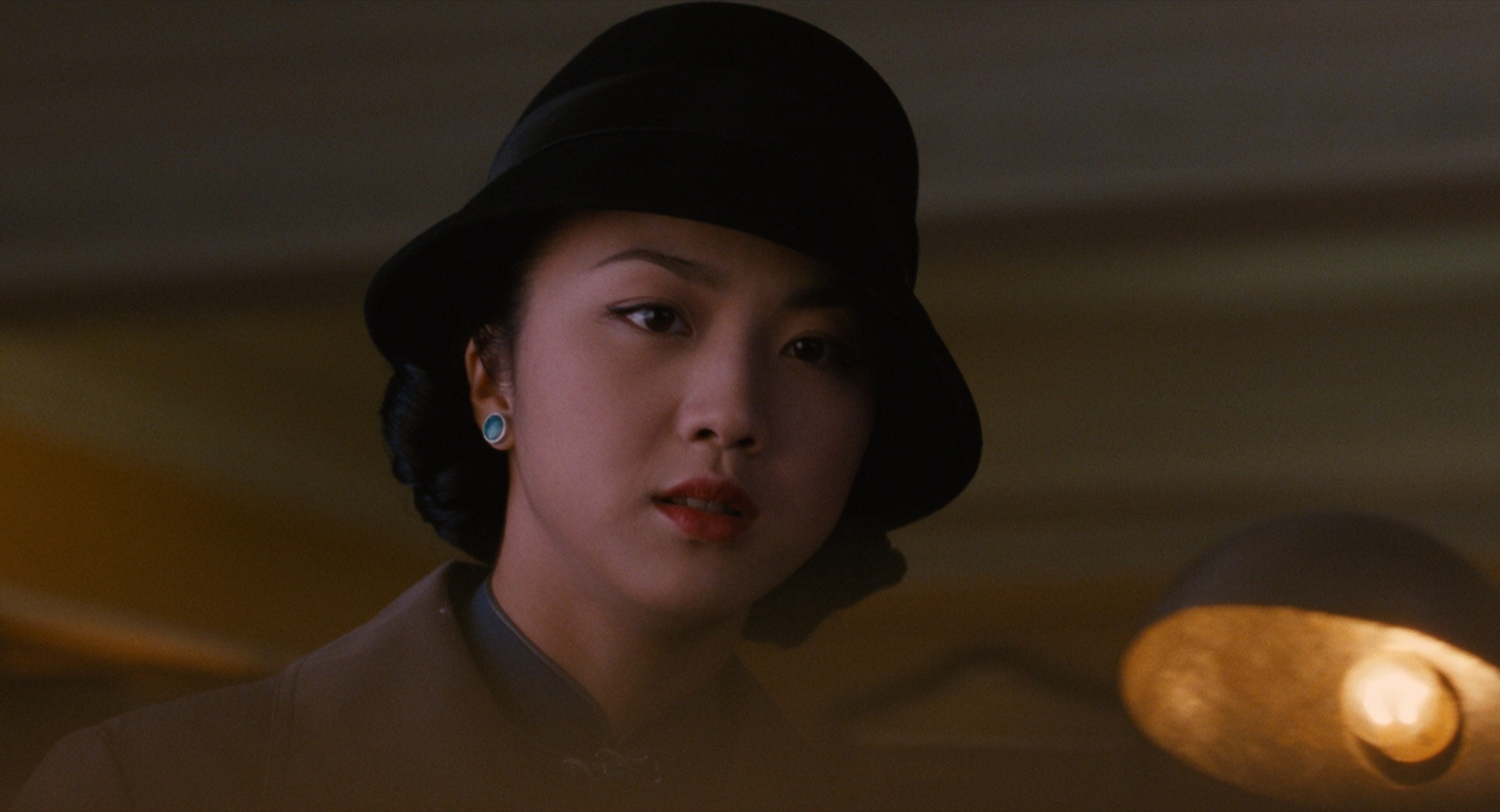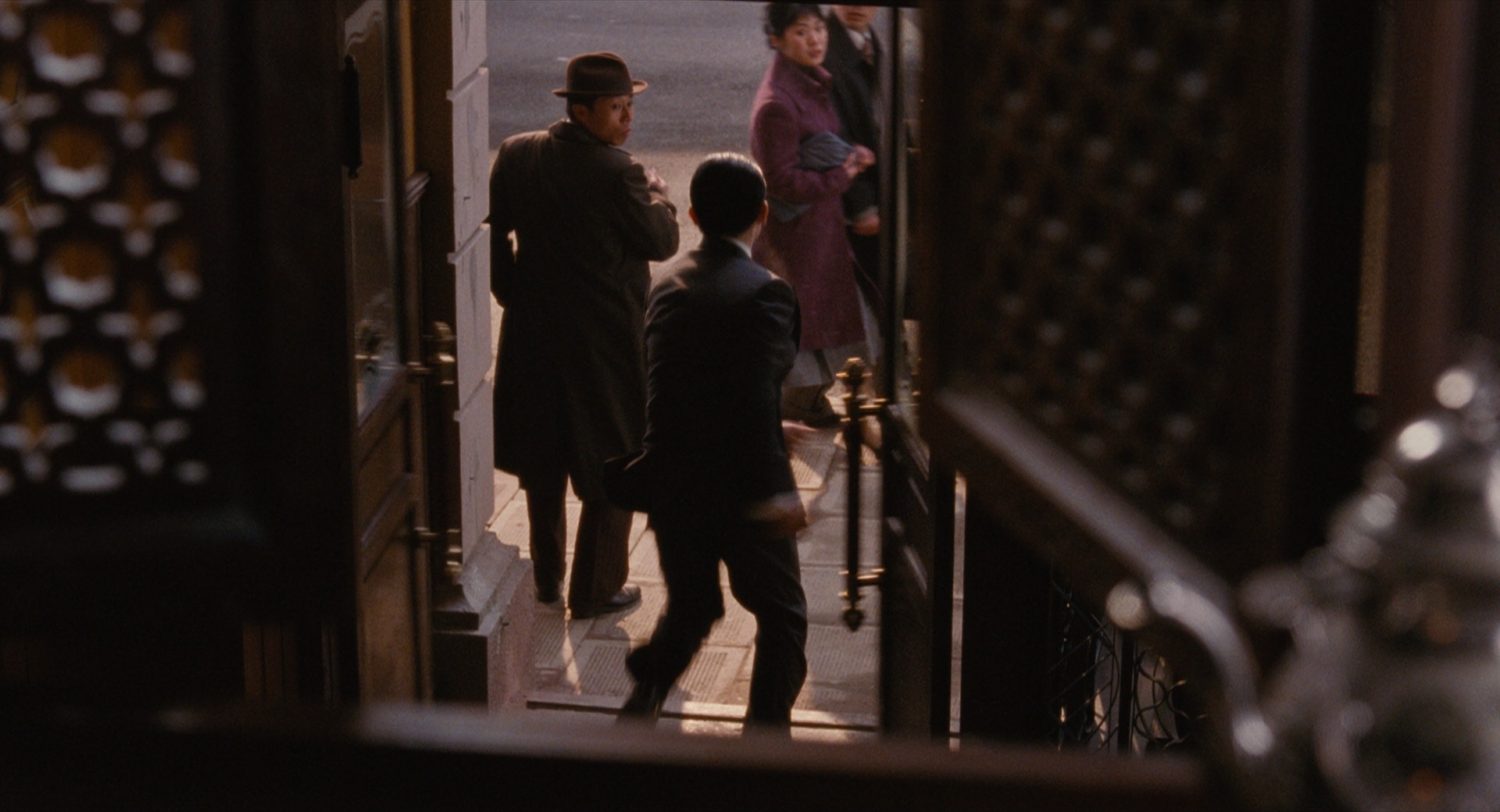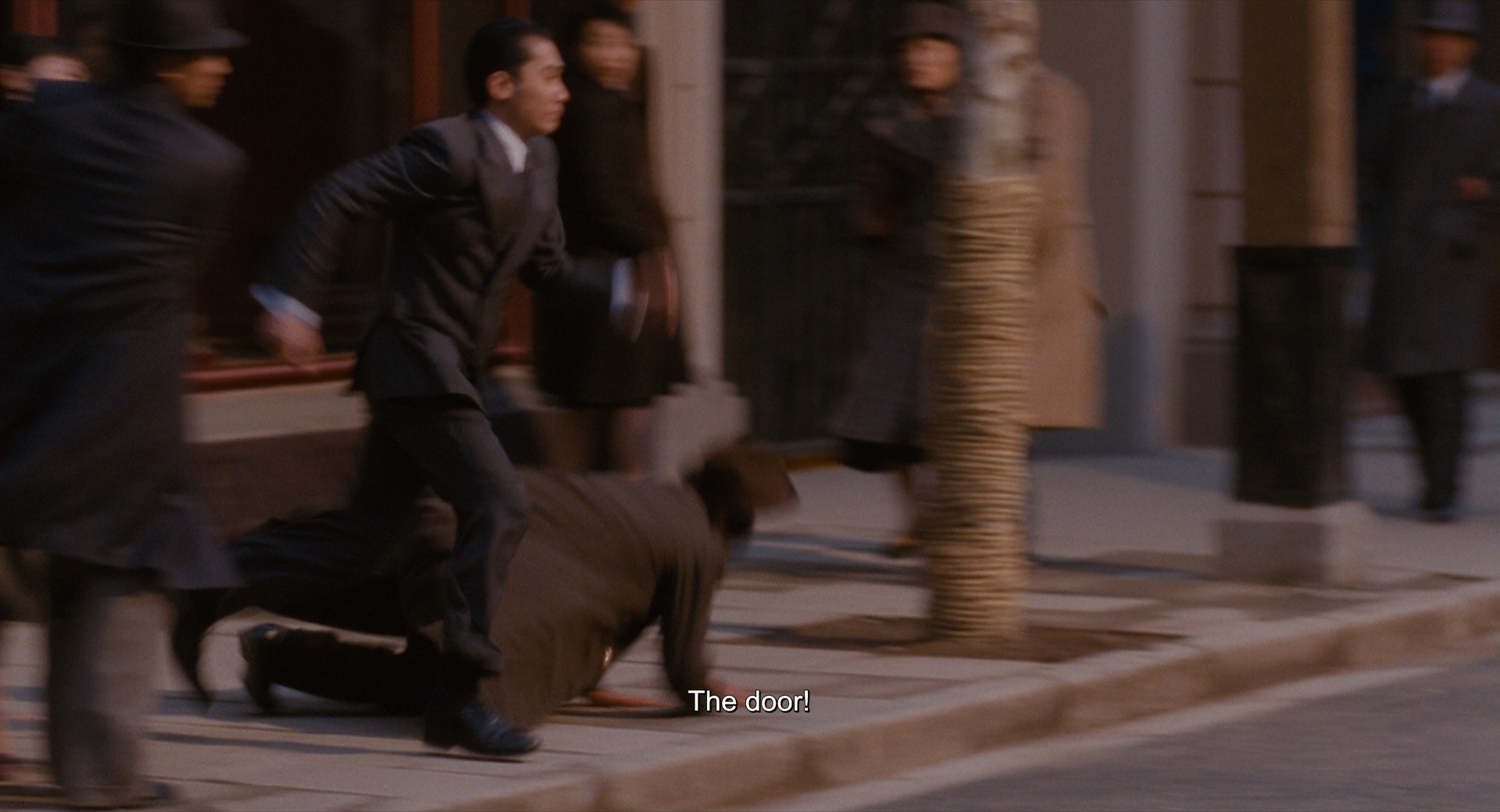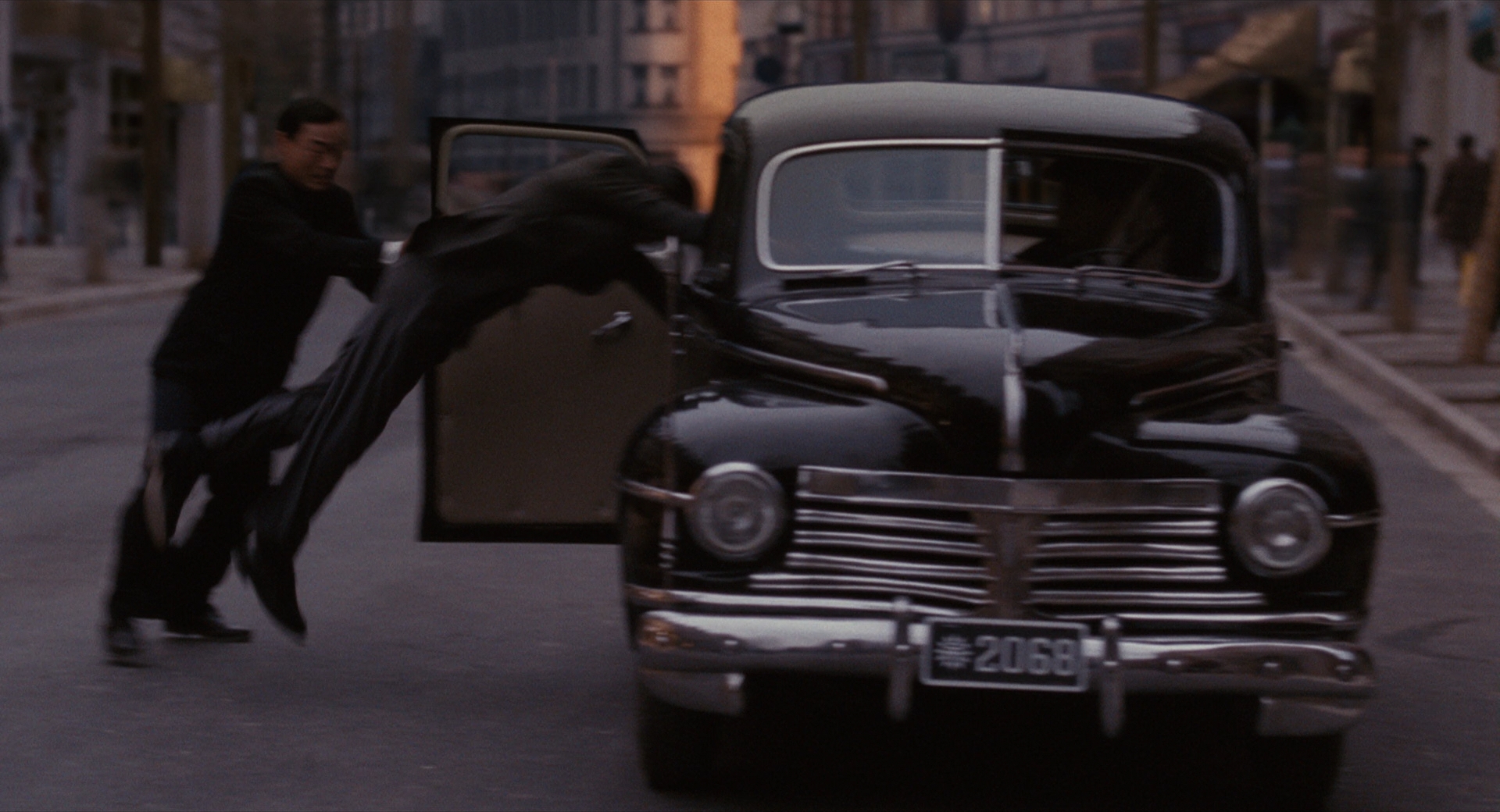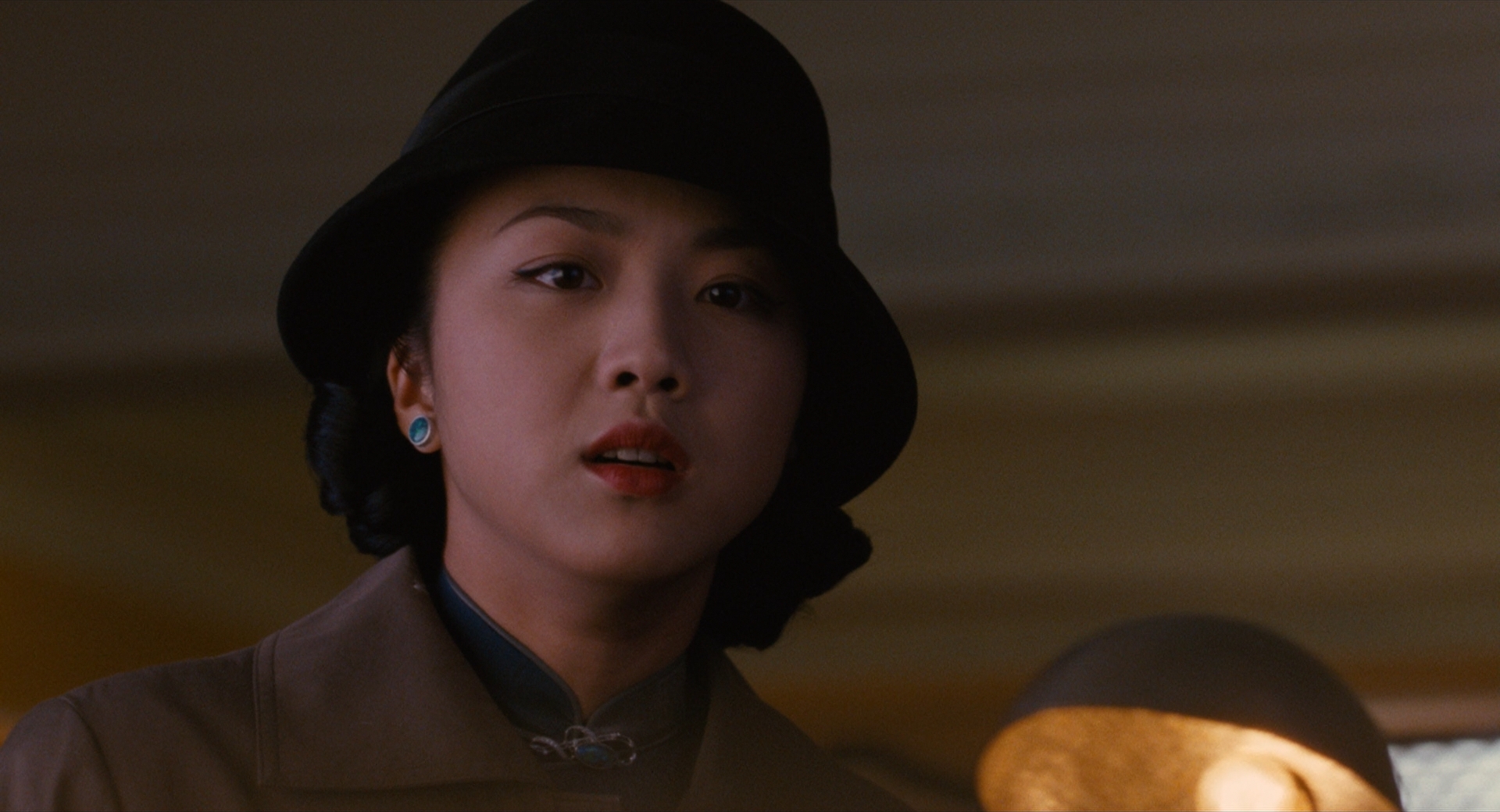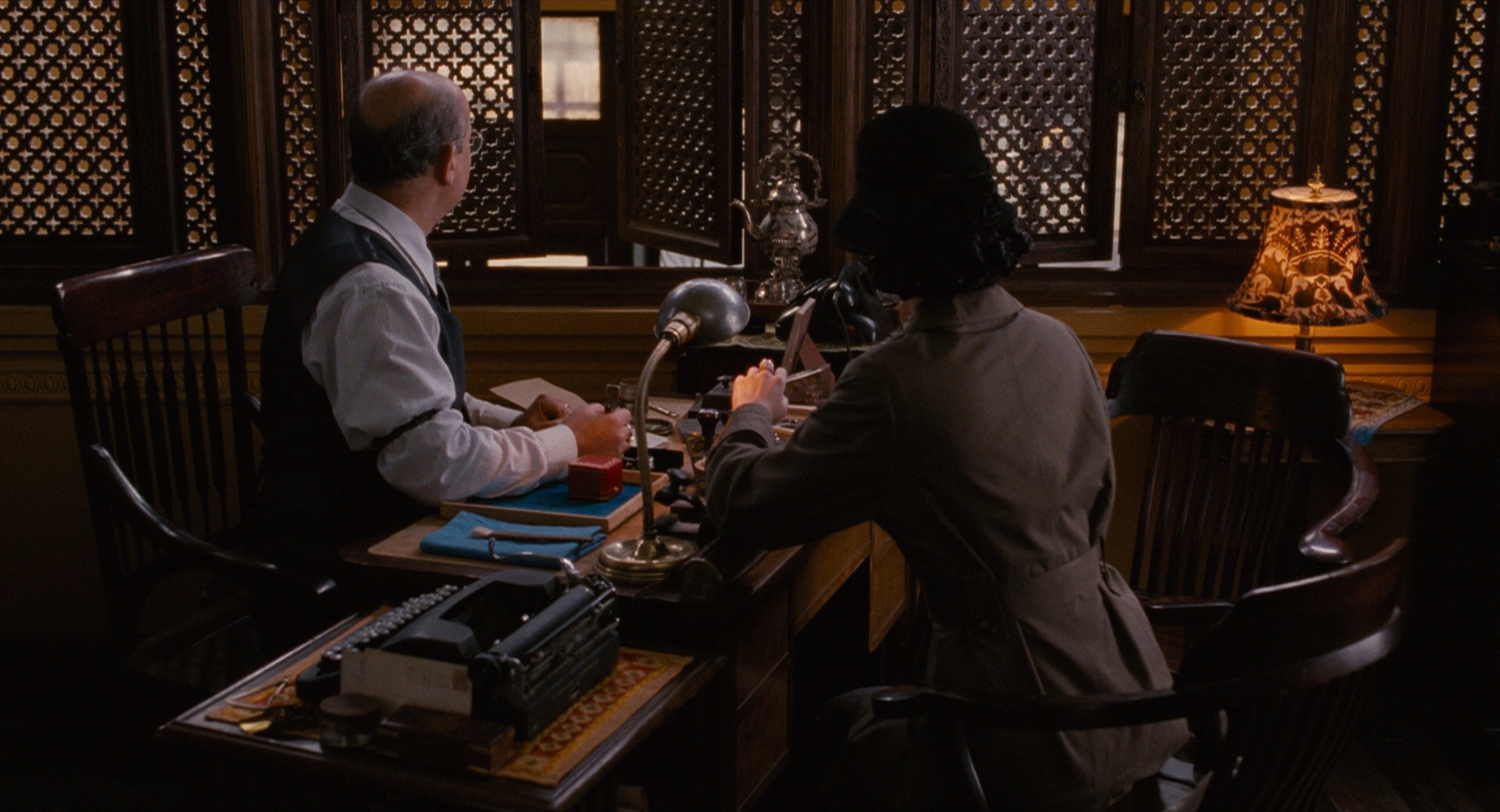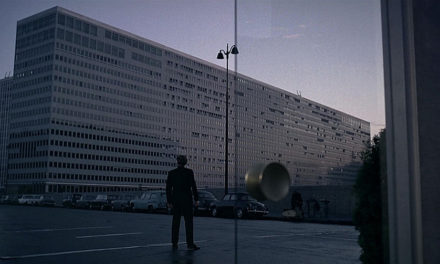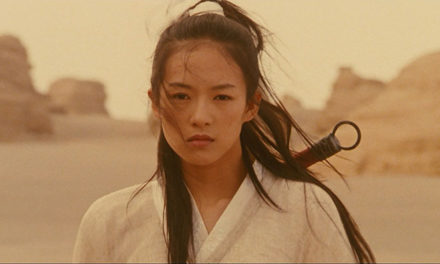05.02.23
BUILDING TENSION WITH JUST A LOOK: LUST, CAUTION
Sometimes, it just takes a look. Building tension is one of the most complicated goals for any filmmaker, requiring a subtle balance between writing, acting, cinematography, sound, music and editing. But when a thriller is at its best, tension is usually built with cinema’s most basic tools: the shot / reverse shot. Few films demonstrate this more effectively than LUST, CAUTION.
Lust, Caution is a 2007 romantic thriller directed by Ang Lee, based on the 1979 novella by Eileen Chang. It follows Wong Chia Chi (Tang Wei), a secret agent living during World War II who is assigned a mission to seduce and then orchestrate the assassination of Mr. Yee (Tony Leung), an official working for the Japanese puppet government in Shanghai.
Lust, Caution was awarded the Golden Lion at the Venice Film Festival and went on to become the highest-grossing NC-17 film of all time, earning $67 million worldwide from its $16 million budget.
The film is a masterclass in slow-burn tension. Lee and cinematographer Rodrigo Prieto carve a precise visual language that slowly brings the audience into the romance and the threat of Chia Chi and Yee’s relationship over the course of the movie.
In this article, we will break down the climactic scene of the film, analyzing how Lee and Prieto leveraged shifting perspectives, lighting design and changing frame sizes to bring the tension of Lust, Caution to a boil.
This scene begins just after Chia Chi has called her KMT superior officer to get the assassination plot against Yee into motion.
SHOT 1
Chia Chi sees Yee’s car and gets in. Her hat obscures her in the foreground, while Yee is framed dominantly in this 2-shot. He appears to be in charge, even though we know that he is actually in grave danger. The framing helps pose the question – will Chia Chi’s secret be exposed?
SHOT 2
Chia Chi looks out the window and sees the Chandni Chowk Jewellery shop in a POV shot. This is where she needs to bring Yee.
SHOT 1 (2)
Chia Chi convinces Yee to go to the jewelry shop. The plot is in motion. Lee and Prieto hold the shot and the tension of the moment as Chia Chi’s face becomes fully visible to the audience for the first time.
SHOT 3
Chia Chi holds Yee’s hand, and then Yee turns it over so that his hand is on top. In one insert shot, the entire power dynamic of this scene is established – Yee might be unaware of the plot in motion, but he is in charge. It is Chia Chi who is in danger.
SHOT 4
The car turns around. We are headed to the jewelry shop.
SHOT 5
In our first wide shot (and one of our only wides in the scene), Lee and Prieto establish setting and raise a new question for the audience: who among these people could be the assassins waiting to strike? Our eye darts around the frame. We are active viewers now.
SHOT 6
The car pulls to a halt, but its framing allows Lee and Prieto to accentuate the question of where the assassins may be. Is this bike taxi driver one of them?
SHOT 7
The driver looks up as he opens the door. Has he noticed someone watching?
SHOT 8
By placing the camera at a high angle, Lee and Prieto place us in the position of a potential assassin. When Chia Chi spikes the lens and looks directly at us, we feel implicated in this plot. We are not just viewers, we are co-conspirators!
SHOT 9
Lee and Prieto place us back in Chia Chi’s point of view, now that we are in on the plot with her.
SHOT 10
Even though the warm tungsten lamp backlighting Chia Chi and Yee in this shot is technically unmotivated by any natural sources in the scene, it serves an important story purpose by separating our main characters from the relatively cool environment around them, focusing our attention back to the dynamic between our leads.
SHOT 11
In our first close-up of the scene, Chia Chi looks back, searching for the KMT assassins unbeknownst to Yee.
SHOT 12
Prieto whip-pans and tilts the camera inside Chia Chi’s POV, until it settles on the KMT officer. Lee and Prieto convey a new piece of information to the audiences: the assassins are here.
SHOT 13
A dolly-pan and frame rate ramp-down into slow motion allow us inside Chia Chi’s emotional state. We feel her reaction to seeing the KMT superior officer as she and Yee walk towards the jewelry store.
SHOT 14
The lighting design and costume design once again serve to obscure Chia Chi from the audience. She is the mysterious force in this shot, and she is now also framed dominantly, in a reversal of the framing in the car. Now she is the one in command.
SHOT 15
Lee and Prieto maintain the slow motion but now in a medium-wide, establishing the geography of where Chia Chi and Yee are in relation to the jewelry story, and suggesting that the bike taxi driver frame right may be another KMT assassin.
SHOT 16
Lee and Prieto put us in Chia Chi’s POV as this man spikes the lens. Another assassin?
SHOT 10 (2)
Lee and Prieto return to Shot 10, the first in the sequence of shots as Chia Chi and Yee walk from the car into the jewelry store. As they cross the threshold, the camera lingers on the man from Shot 16, confirming our suspicions that he is an assassin.
SHOT 17
Chia Chi is framed between the assassin and Yee as she enters the store.
SHOT 18
We have now moved to our second location of the scene – the inside of the jewelry shop. Yee notices something is wrong with Chia Chi for the first time, and Chia Chi spikes the lens again, placing us in the position of a voyeur. Is this glance an indication that the camera is occupying the position of another assassin?
SHOT 19
Lee and Prieto now place us inside Chia Chi’s POV, and by having the man in the hat spike the lens, they answer our question from the previous shot: this man is an assassin as well. An entirely visual pattern has been fully established for us now. All it takes is Chia Chi glancing into the lens for the viewer to register the presence of an assassin.
SHOT 20
Prieto and Lee place us back in the assassin’s POV. Yee spikes the lens in a close-up as he walks past. Does he know? A narrative evolution of this same dynamic, raising the tension entirely through a look.
SHOT 21
On the reverse dolly shot, Yee is framed dominantly and looks at Chia Chi as she exits the frame. The tension is elevated that he suspects her of something.
SHOT 20 (2)
Back to Shot 20. The camera pans and dollies to frame Chia Chi dominantly again. This is the primary tool through which Lee and Prieto keep the audience on our toes. Who knows what?
SHOT 22
Lee and Prieto position Yee between the shop attendant, Chia Chi and the assassins, trapping him in the frame.
SHOT 23
When Yee and the attendant exit frame, Chia Chi looks back at the assassins, setting up the stakes for the final act of the scene.
SHOT 24
The production design and lighting design work in concert to establish this upstairs space as dark, cramped, and vulnerable to attack. The scene has entered its final act.
SHOT 25
Lee and Prieto establish the eyeline between Yee and Chia Chi as they sit across from the shop manager.
SHOT 26
Chia Chi appears to be looking somewhere beyond the desk, raising a question to the audience about what she sees.
SHOT 27
Her POV shot answers the question, and establishes the geography of the space. Chia Chi has a view of the front door, and sees the assassins exiting – possibly to bring everyone else in?
SHOT 28
Lee and Prieto frame Chia Chi in a close-up from a new angle, bringing us back into the room.
SHOT 29
As the shop manager opens the box, Lee and Prieto establish the reverse of the line from Shot 25 to show us where the shop manager, Chia Chi and Yee are in relation to one another.
SHOT 30
Chia Chi’s POV. This ring is an important symbol of Yee and Chia Chi’s relationship, and raises the stakes of this scene even further. Can she really orchestrate his assassination now?
SHOT 28 (2)
Back to Shot 28. Is Chia Chi looking at the ring, or at the front door?
SHOT 31
Lee and Prieto frame Yee in a medium close-up on the same line as Shot 25. What does he know?
SHOT 29 (2)
Back to Shot 29, as Chia Chi looks to Yee for his reaction to the ring.
SHOT 28 (3)
Back to Shot 28. Prieto pans down as Chia Chi takes her ring off.
SHOT 30 (2)
Back to Shot 30. Chia Chi’s hand enters her POV of the ring.
SHOT 31 (2)
Back to Shot 31. Lee is repeating shots in the editing pattern for the first time in this scene. Yee looks at Chia Chi as she puts the ring on. Does he suspect her?
SHOT 32
Lee and Prieto establish a new line between Chia Chi and Yee. The scene has come down to just the two of them, sitting across from one another.
SHOT 33
This shot is the reverse of Shot 32, a subtle repositioning from Shot 31 that removes any sense that the shop manager is a part of this conversation.
SHOT 34
Lee and Prieto switch to a longer lens and move into a close-up over Yee’s shoulder. The environment around Chia Chi has blurred away into an abstraction, and we are placed squarely in her emotional perspective as she puts the ring on.
SHOT 33 (2)
Back to Shot 33. Yee is framed with a slightly wider lens than Chia Chi, establishing that he is the subject of her gaze, and that we remain rooted in her perspective. But as he spikes the lens, we feel a subtle shift in dynamics. Whether consciously or subconsciously, the viewer has been primed to associate this sort of framing, this sort of glance nearly down the barrel, with a sense of tension and suspenseful knowledge. A fear of being caught. We begin to wonder whether Yee is in more control than first suggested.
SHOT 32 (2)
Back to Shot 32. Lee and Prieto shift back to a wider lens as Yee tells Chia Chi to keep the ring on. The momentum swings back to Yee, and he enters his over-the-shoulder shot to sit closer to Chia Chi.
SHOT 35
Lee cuts on the action of Yee moving closer to Chia Chi, and doing so allows him to cross the line into an over-the-shoulder close-up. This is the emotional apex of the scene.
SHOT 36
The reverse of Shot 35. For the first time in the scene, Yee and Chia Chi are shown in matching frames. The balance of power is even, and the audience has no idea how things will now unfold. Chia Chi just about spikes the lens before looking at Yee. Does Yee know? Will Chia Chi follow through with the assassination?
SHOT 35 (2)
Yee stares at Chia Chi.
SHOT 36 (2)
Chia Chi stares back.
SHOT 35 (3)
Yee notices that something is off.
SHOT 36 (3)
Chia Chi tells him to escape under her breath in a barely audible whisper.
SHOT 35 (4)
Yee doesn’t know what Chia Chi means. For the first time, the audience understands that he has no idea how much danger he is in…
SHOT 36 (4)
…Until Chia Chi tells him to escape again.
SHOT 35 (5)
Yee finally understands, and he bolts out of the close-up.
SHOT 37
Lee and Prieto move back into a medium shot. Chia Chi and Yee’s relationship is over.
SHOT 38
Yee sprints out of the shop in a chaotic hand-held shot. The energy of the scene has completely shifted. The slow simmering static nature of the cinematography up to this point not only allowed us to focus in on the subtleties of each glance, but now gives the filmmakers the ability to shatter that static foundation to great emotional effect.
SHOT 26 (2)
Lee and Prieto return to Shot 26, as Chia Chi watches him escape.
SHOT 27 (2)
And again Chia Chi’s POV in Shot 27 to see Yee sprinting out of the shop.
SHOT 39
We are back outside the shop for the first time since Chia Chi and Yee entered. Prieto whip pans on a dolly as Yee knocks the assassin over and sprints towards his car.
SHOT 40
Framed in a similar high angle as Shot 8, Lee and Prieto place us in the POV of the KMT leader on the balcony as Yee sprints towards the car. An added bit of tension that has us wondering if Yee might be in the scope of a gun, seconds from death.
SHOT 39 (2)
The dolly tracks Yee as he dives into the car and escapes. Phew!
SHOT 26 (3)
We return to Chia Chi as she watches Yee escape.
SHOT 40
For the first time, we see a wide shot of the jewelry shop manager’s office from an angle that establishes where Chia Chi has been looking. The pair sit stunned in silence.
Despite the oft-quoted Hitchcock example, you don’t always need a ticking time bomb to create a sequence with intense suspense. As Lee and Prieto prove in this scene, sometimes all it takes is a carefully telegraphed series of shot / reverse-shot patterns that clue the audience into an entirely visual hierarchy of knowledge. If you can achieve that, something as subtle as a glance can create a cinematic explosion.


